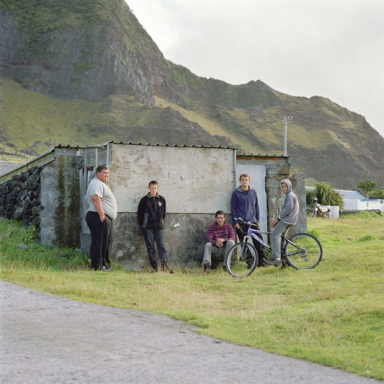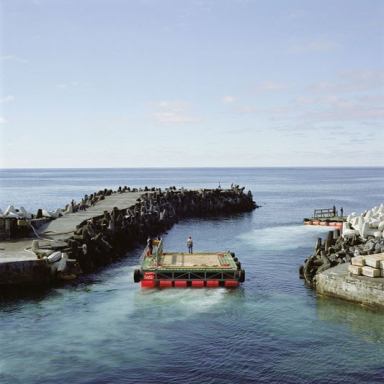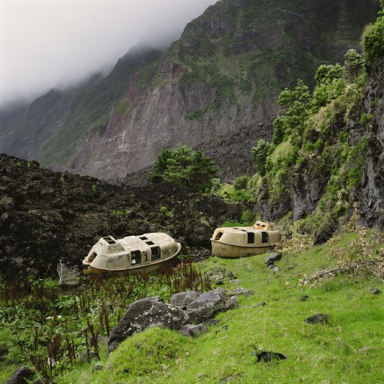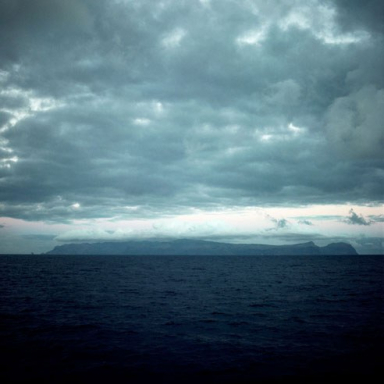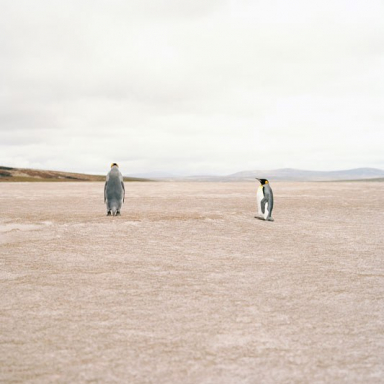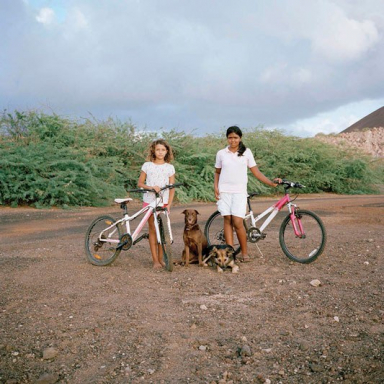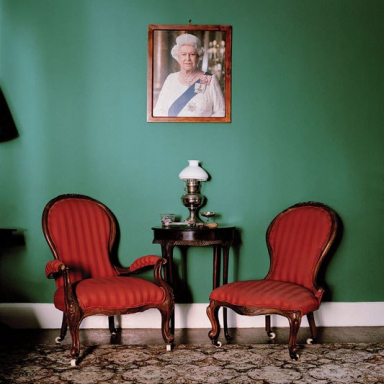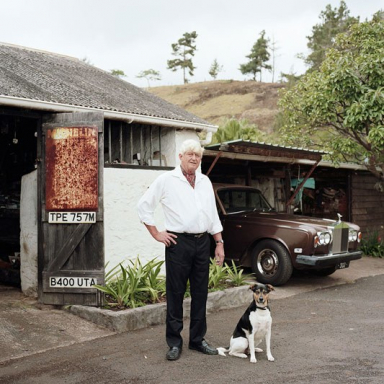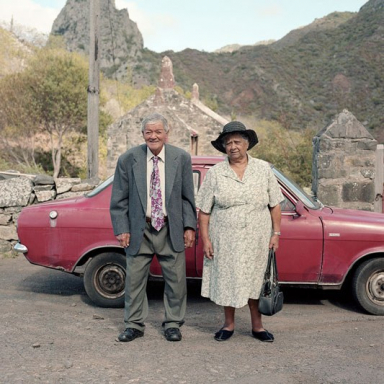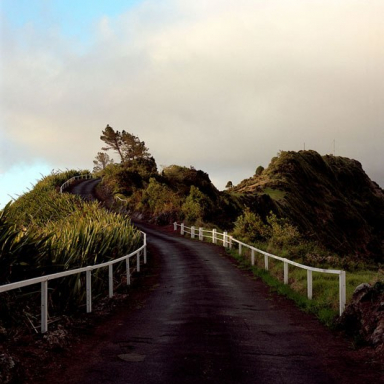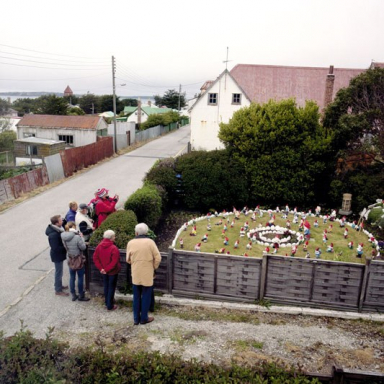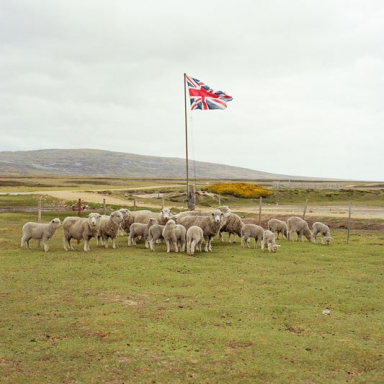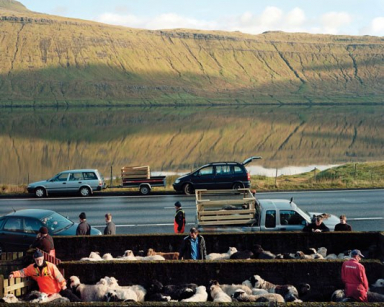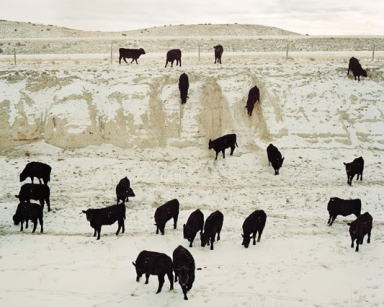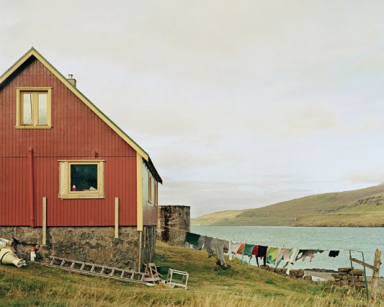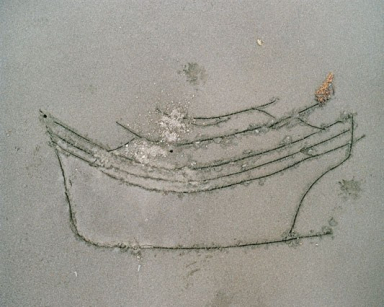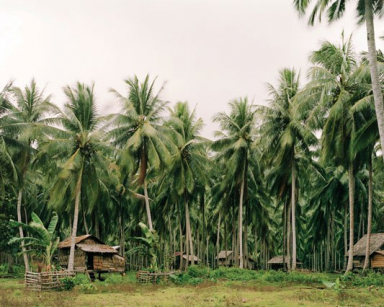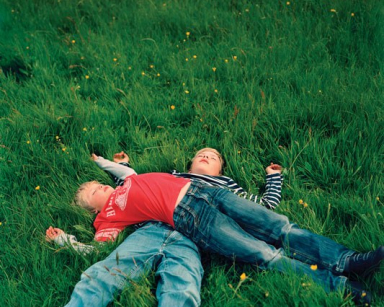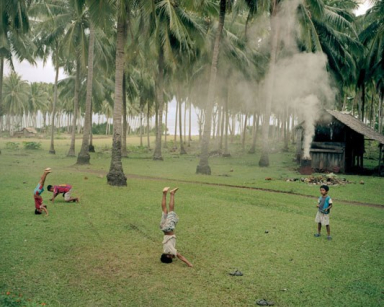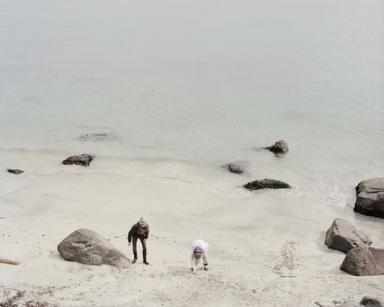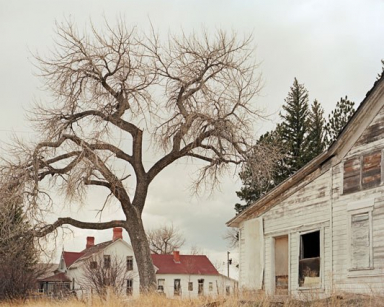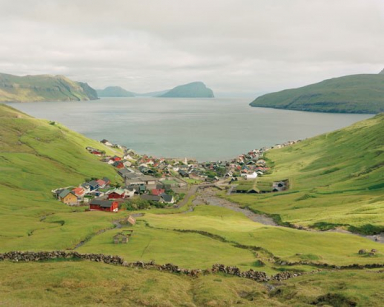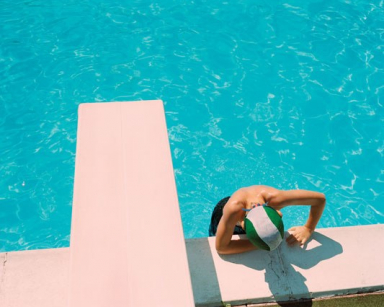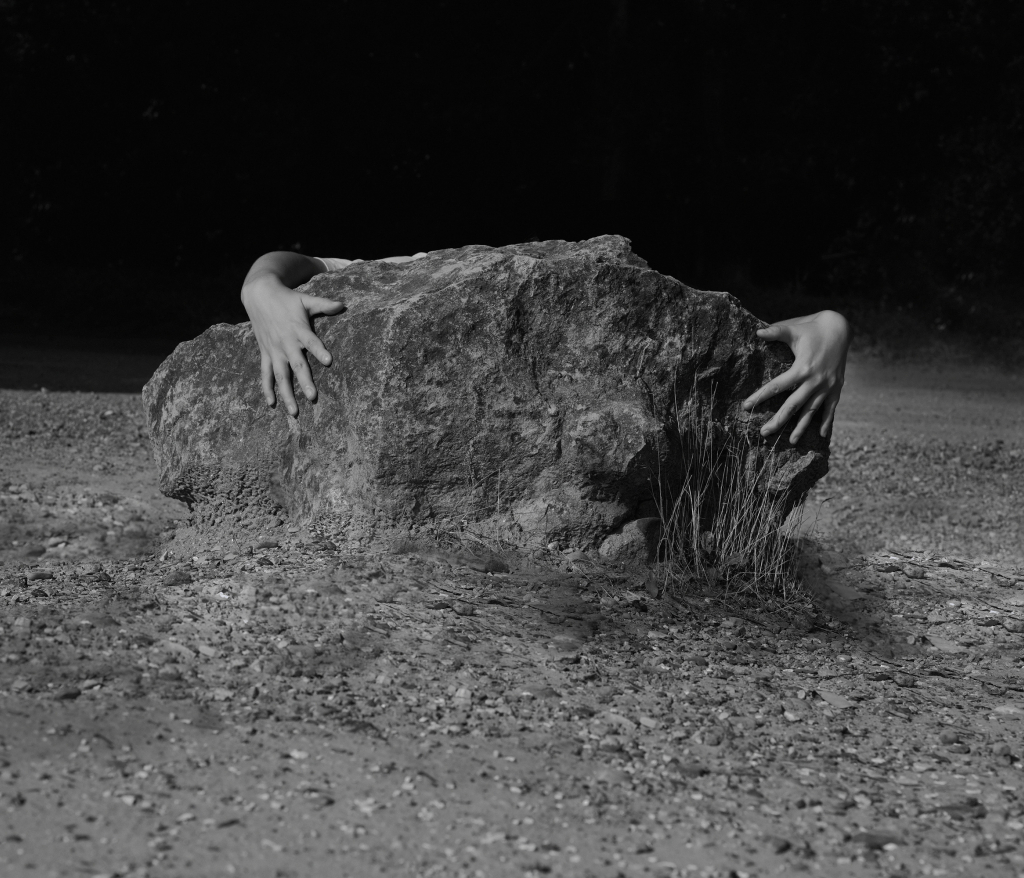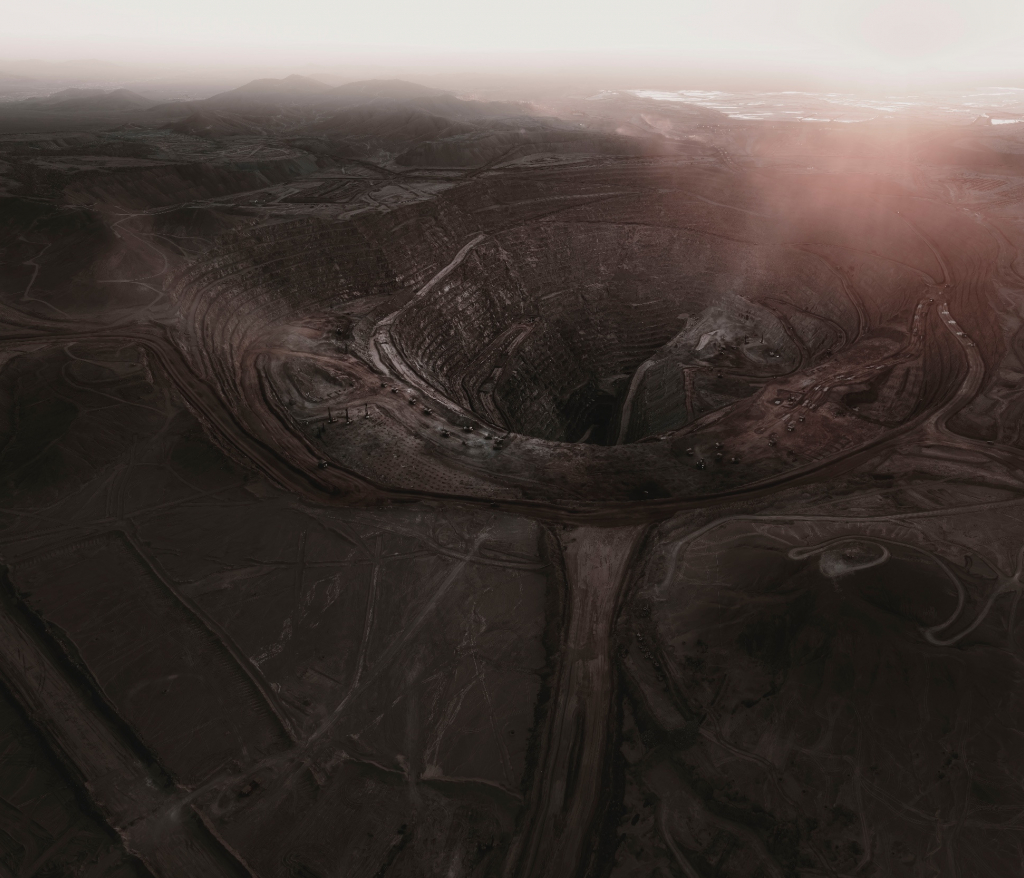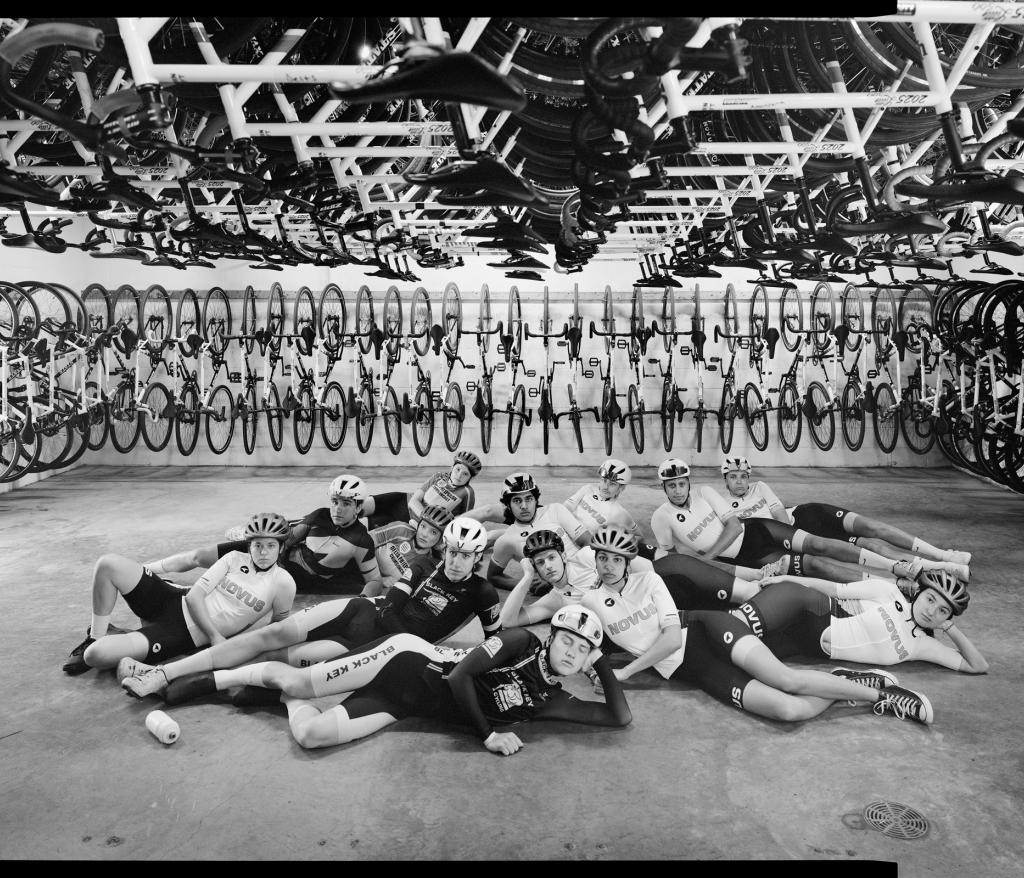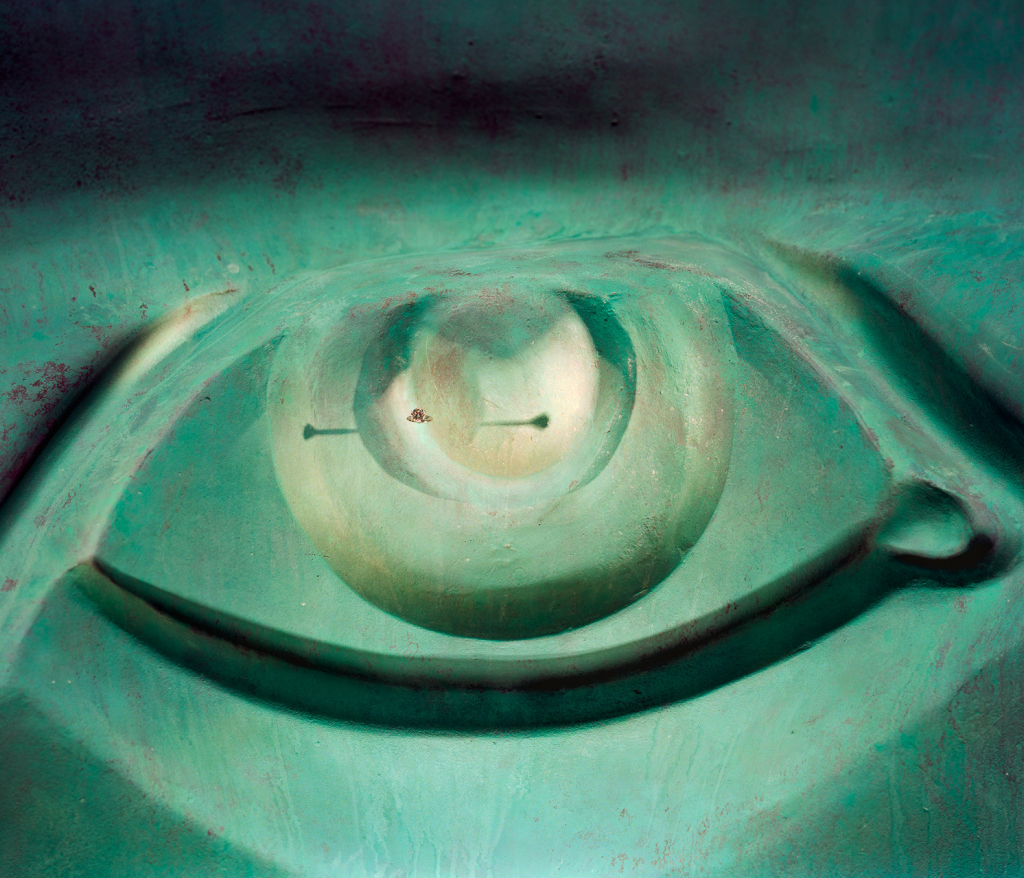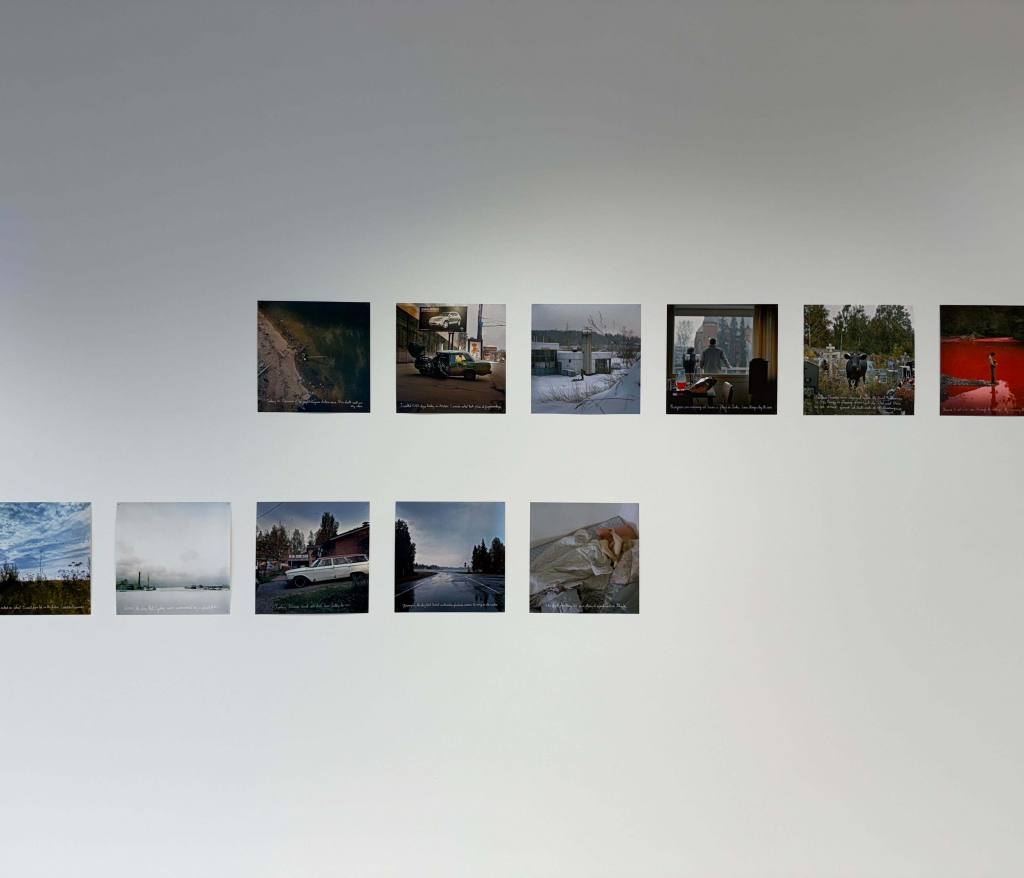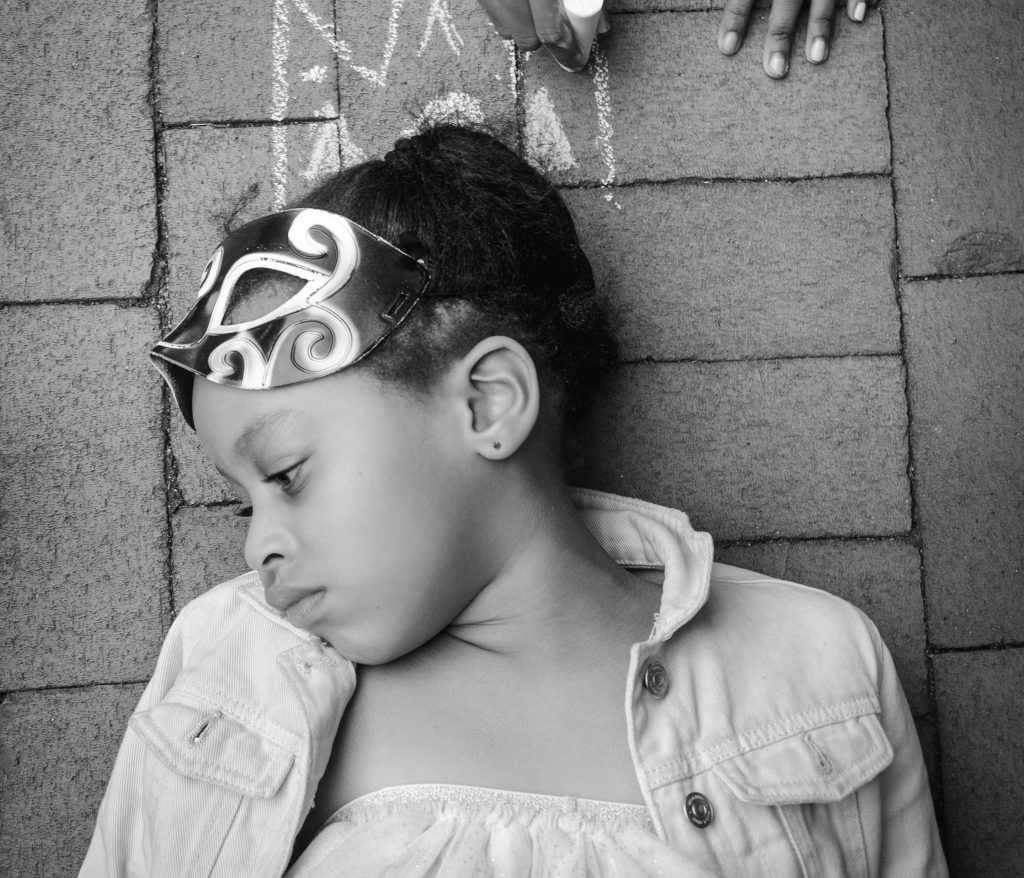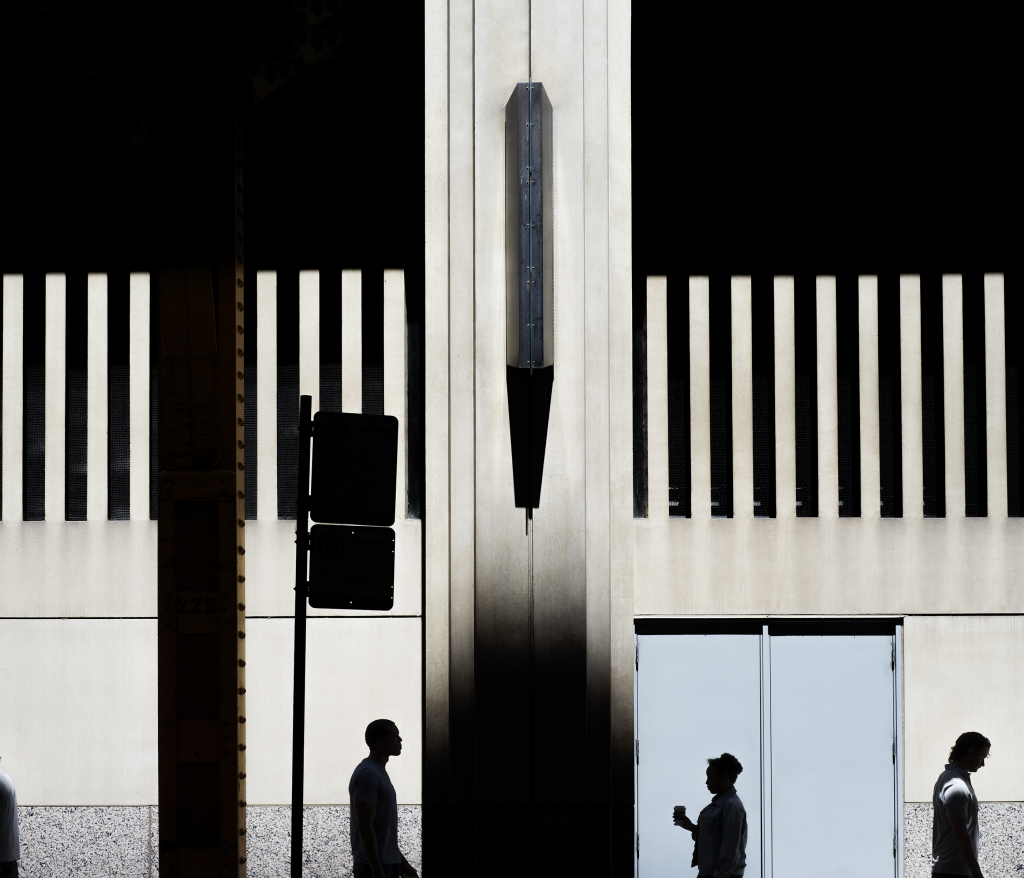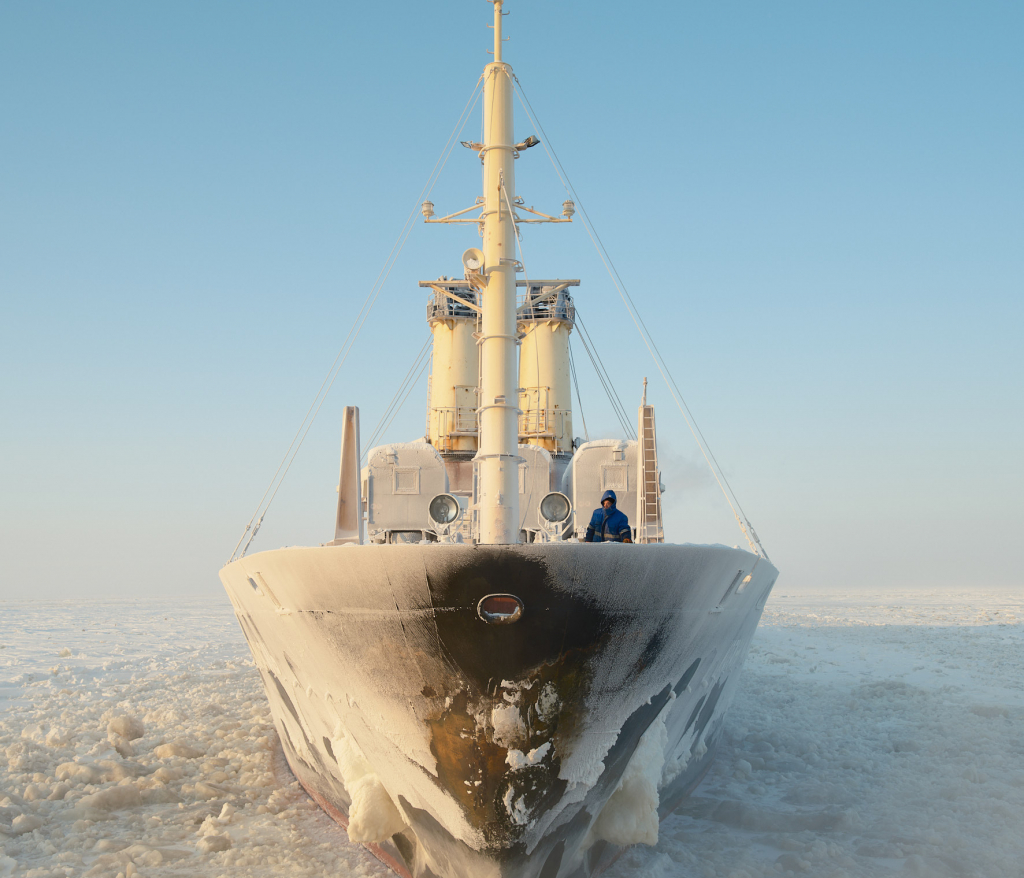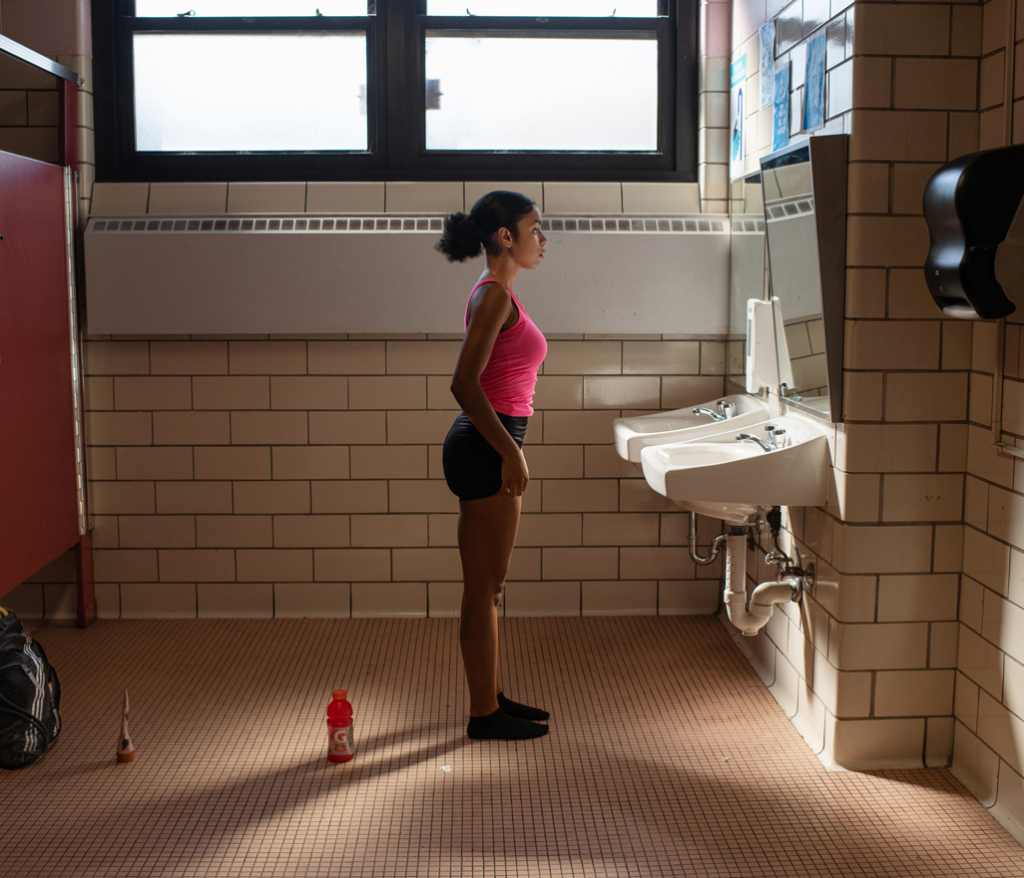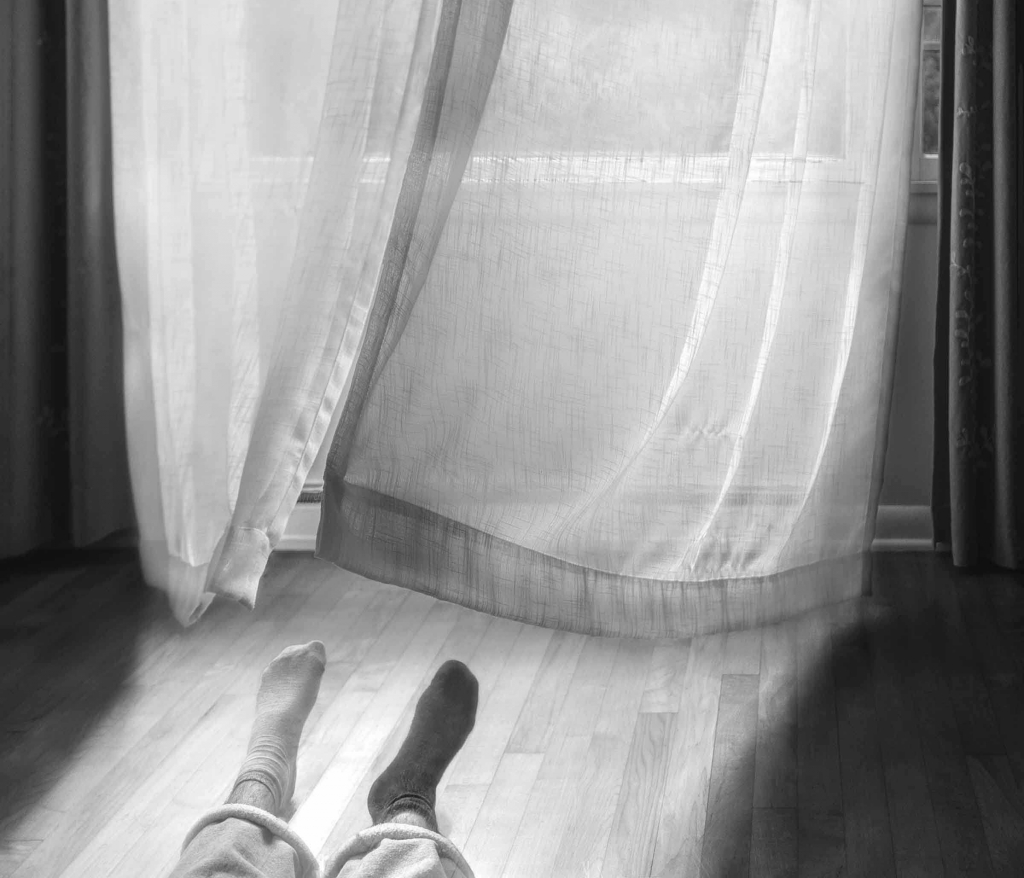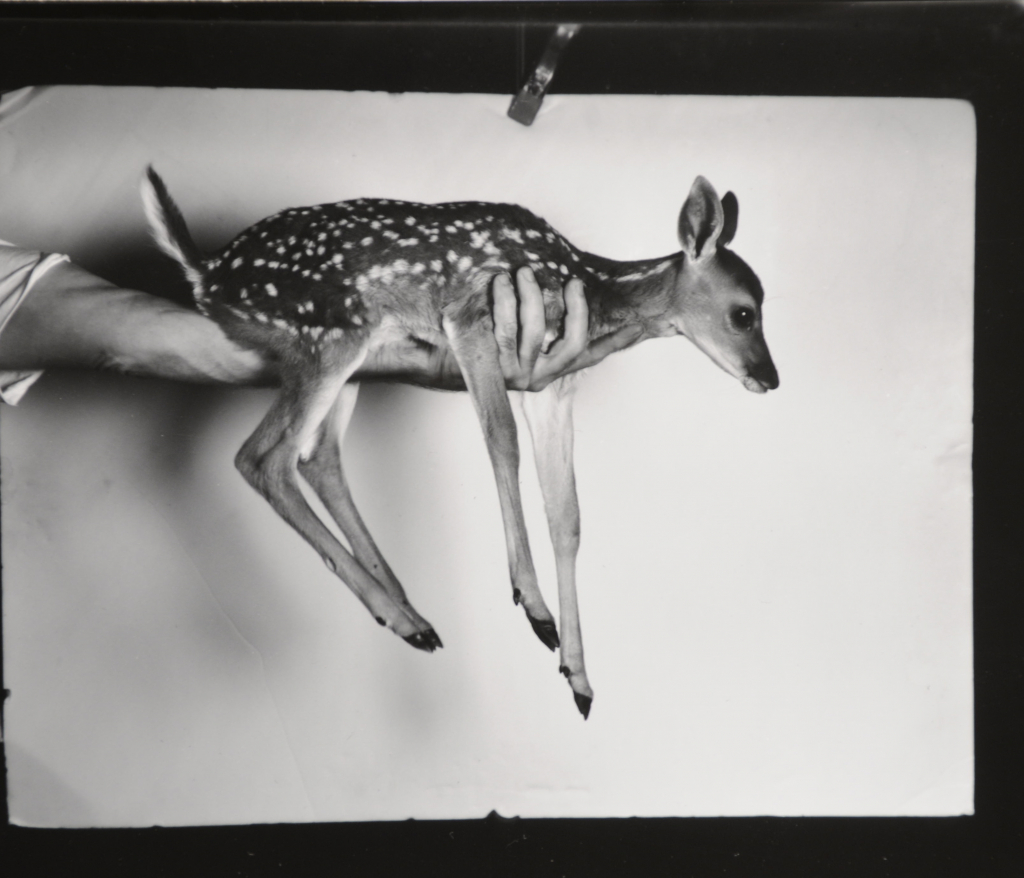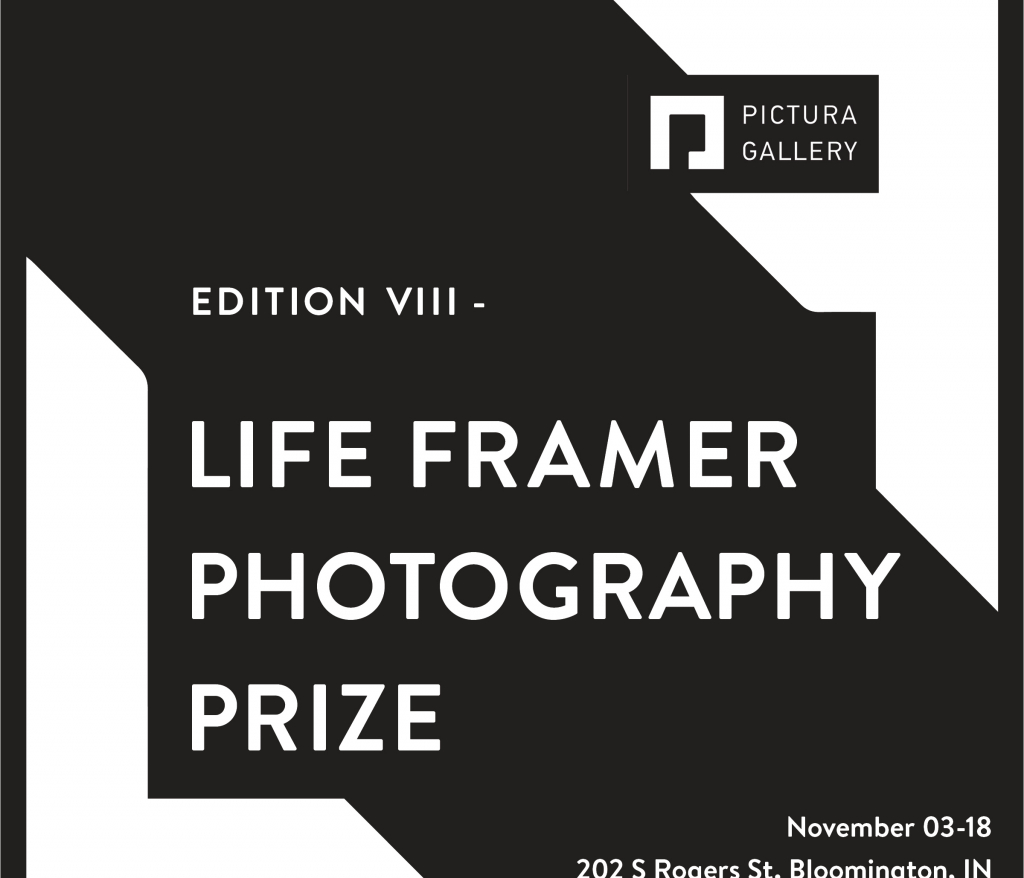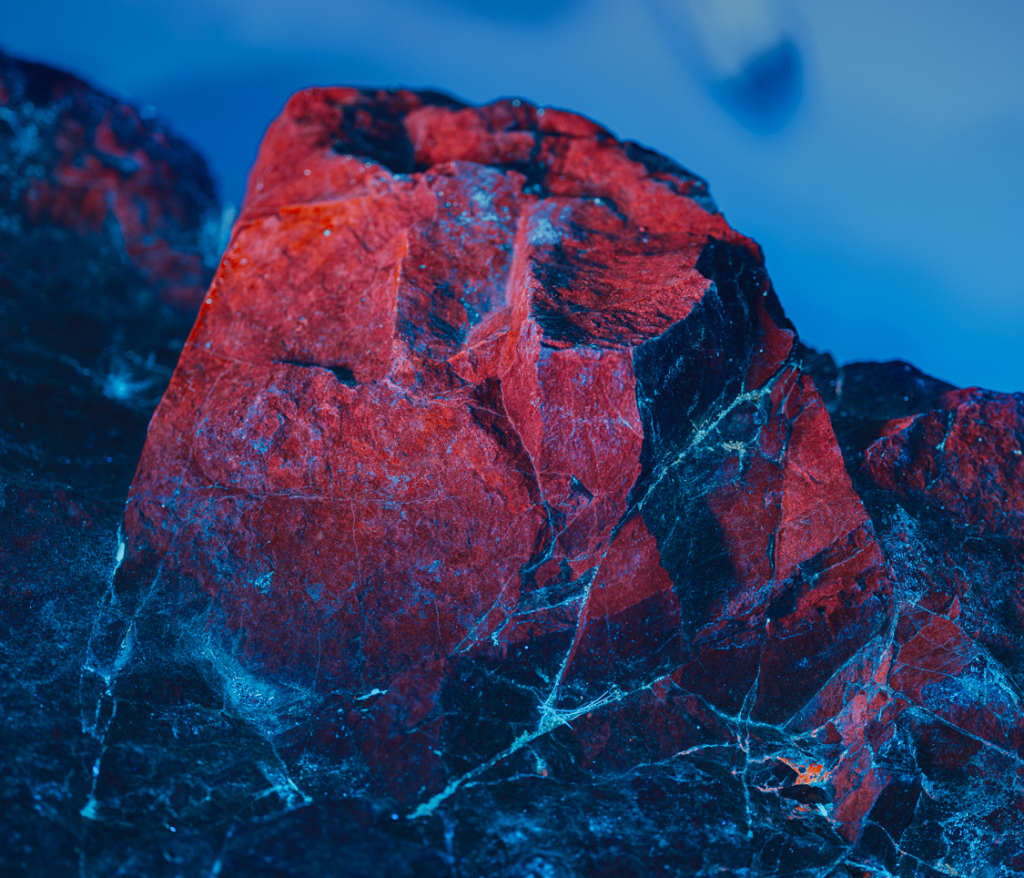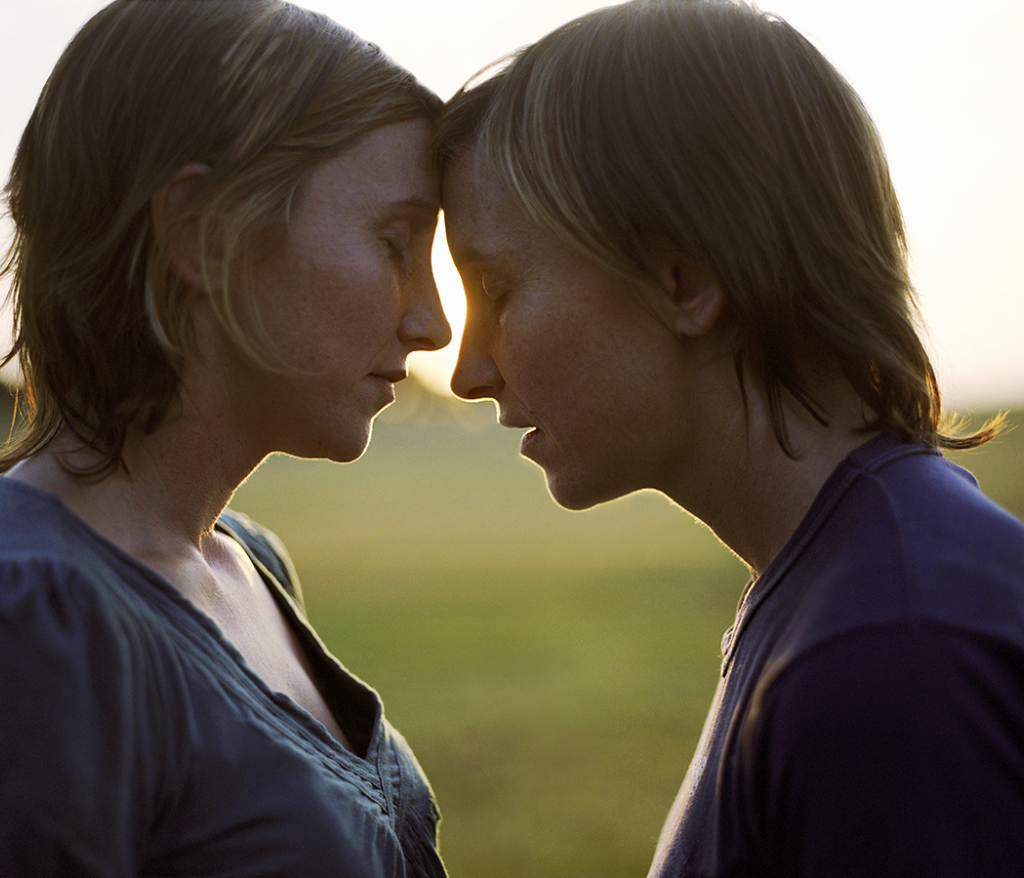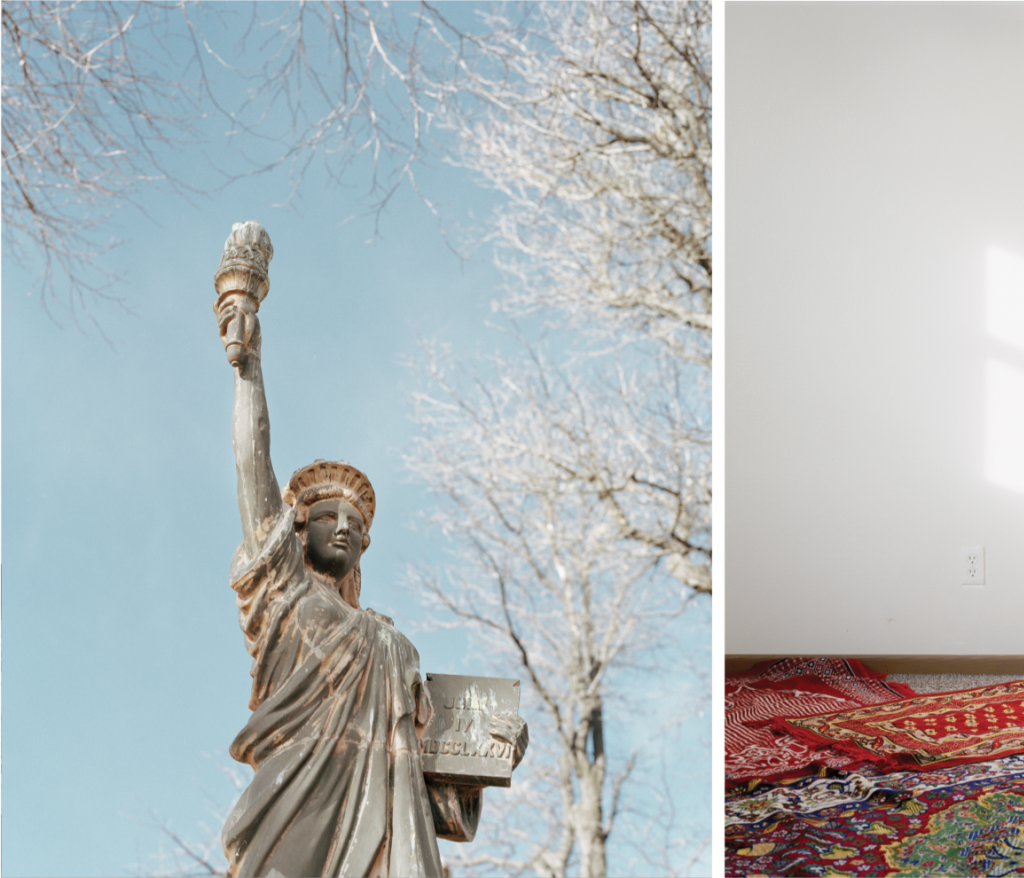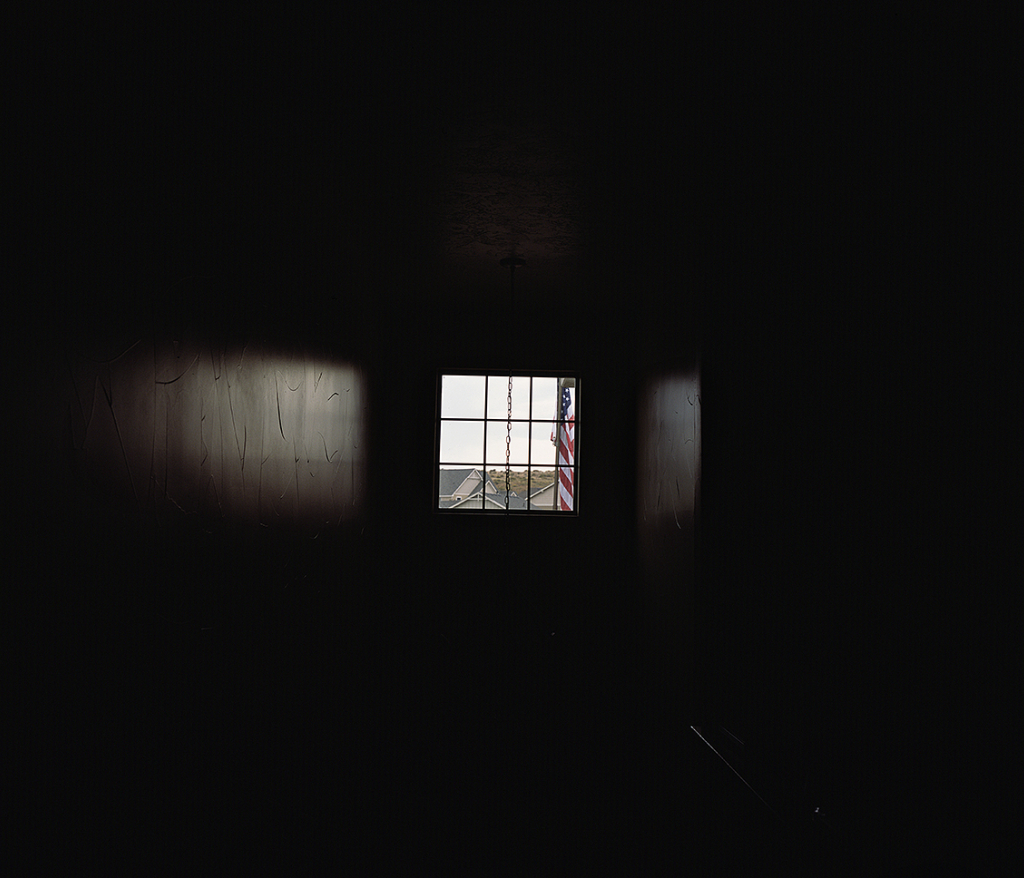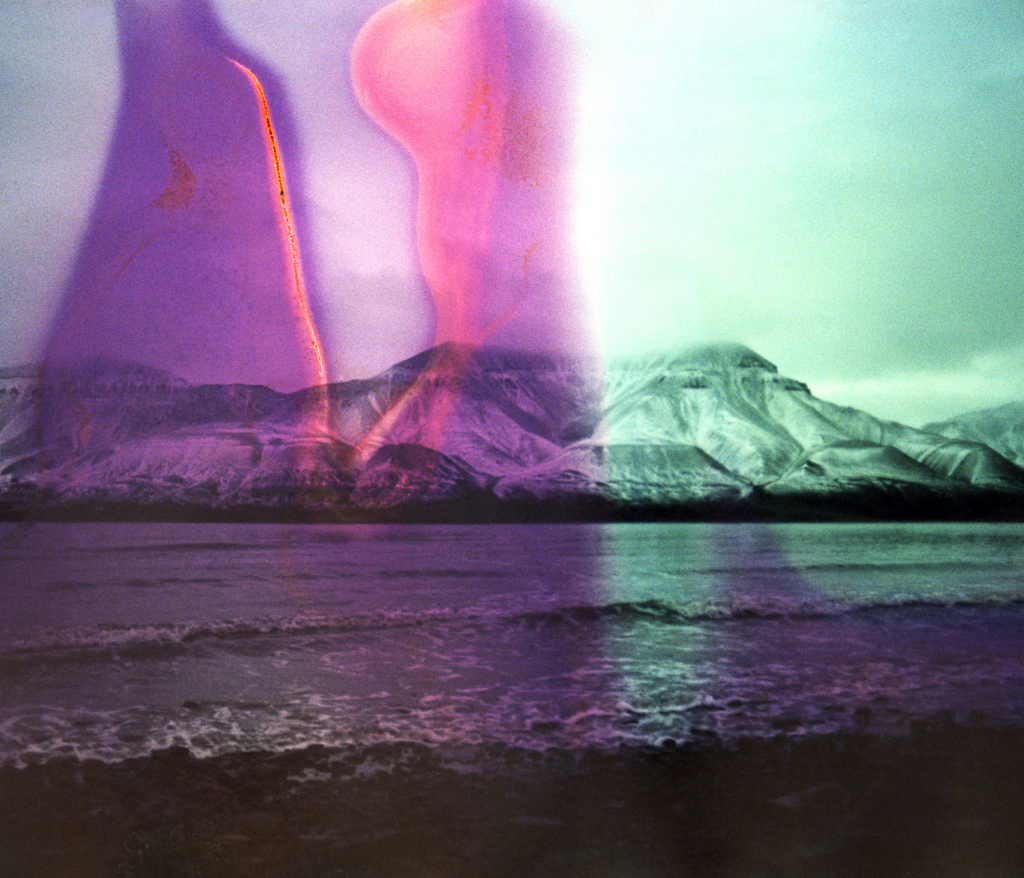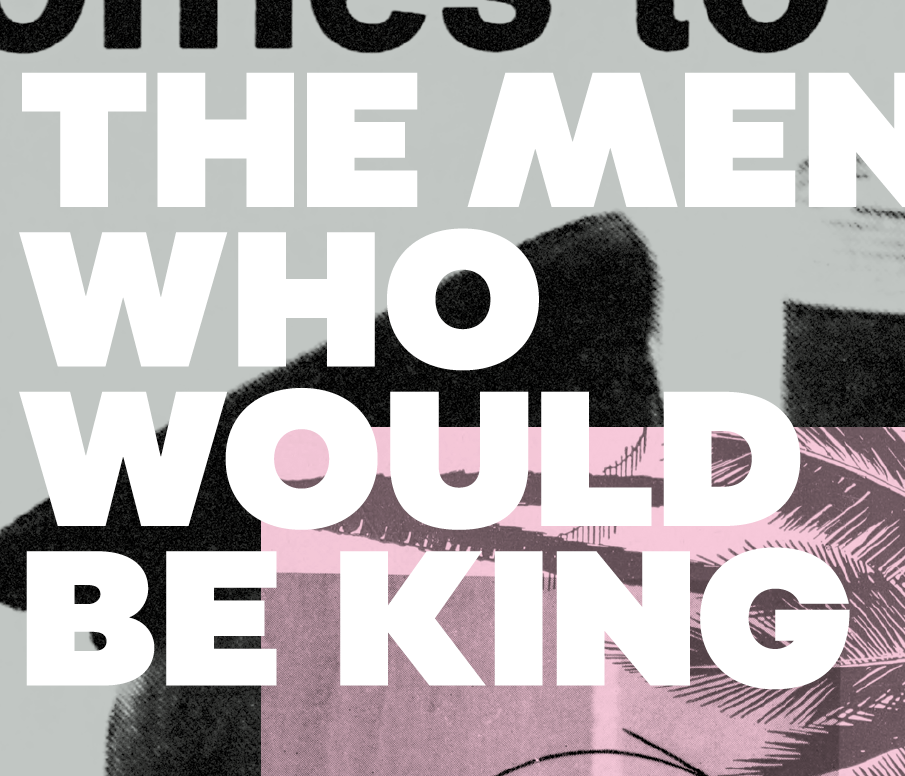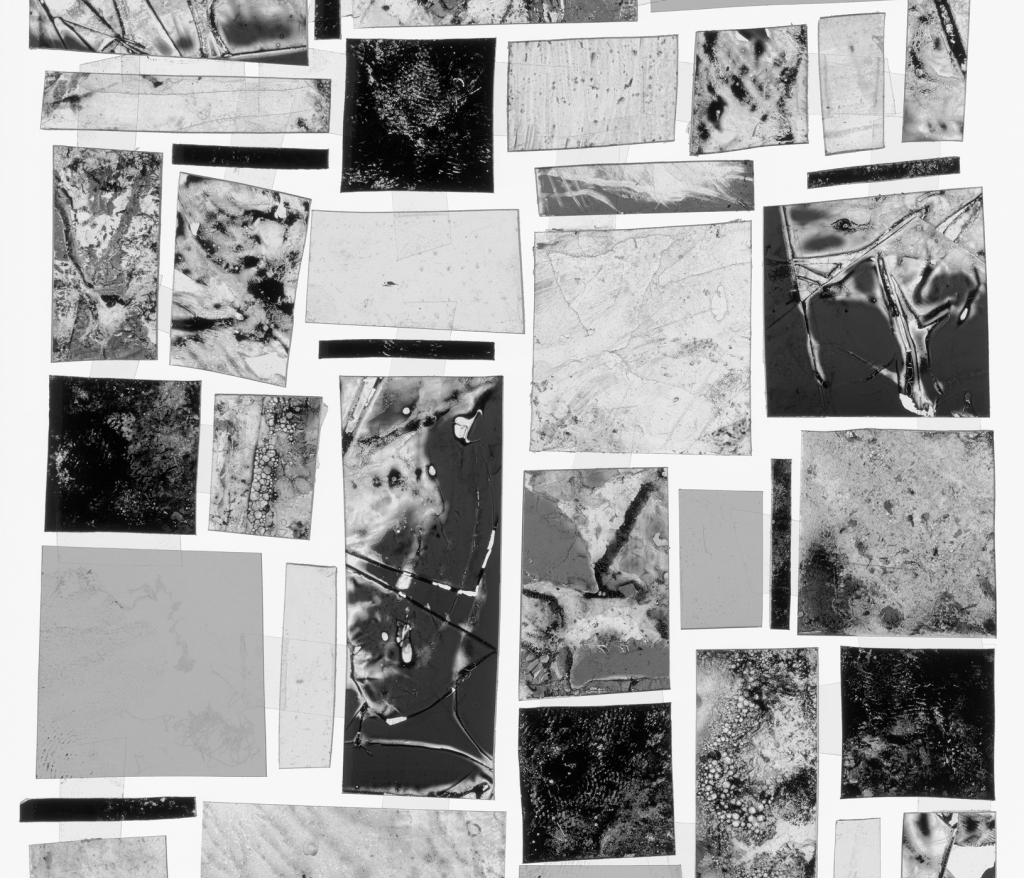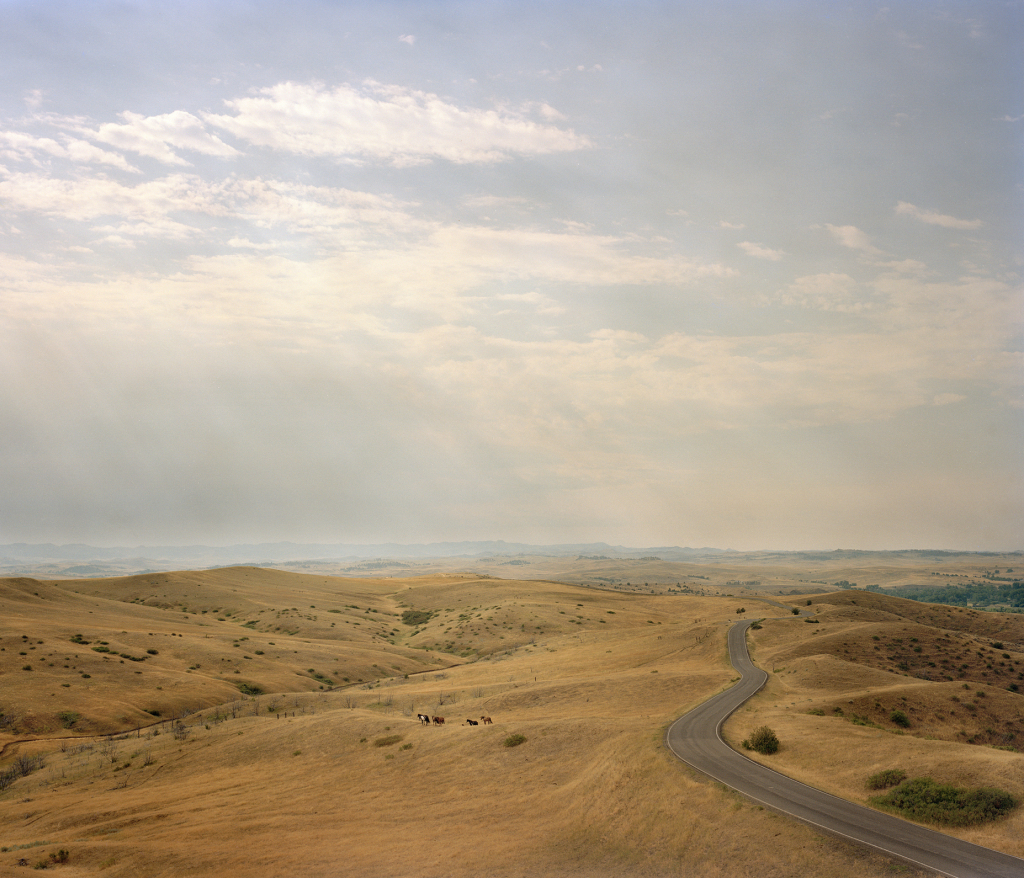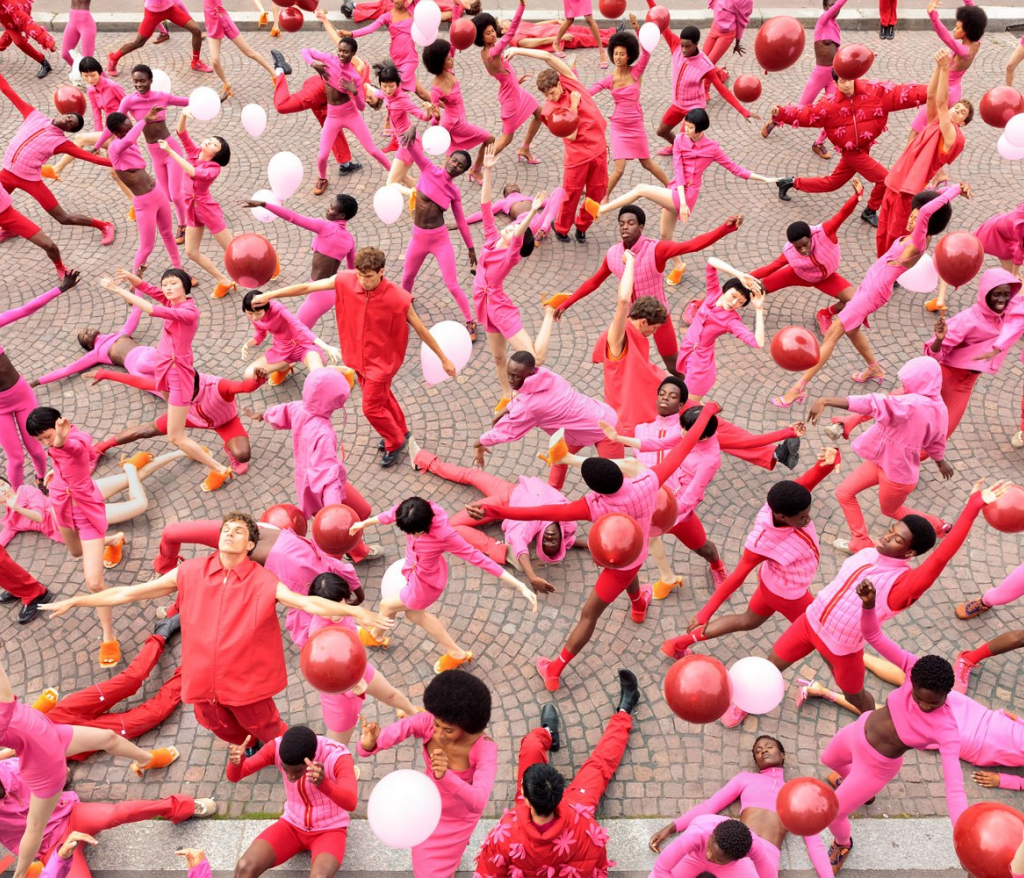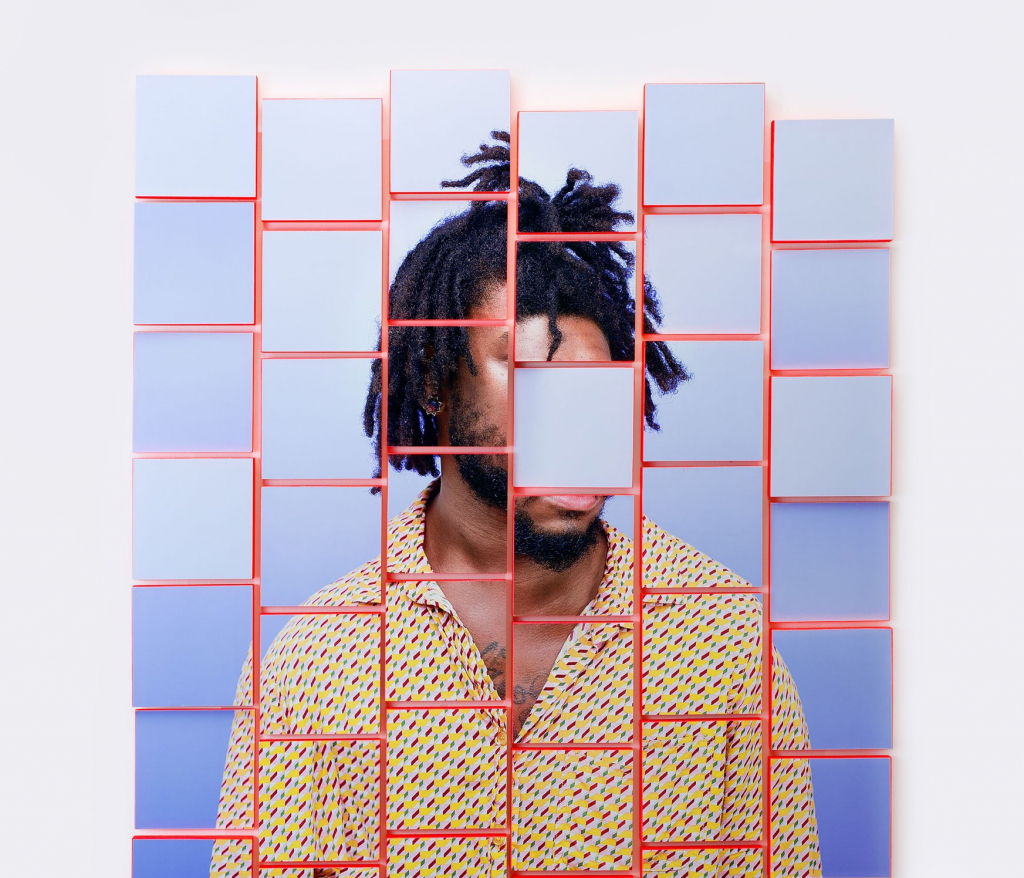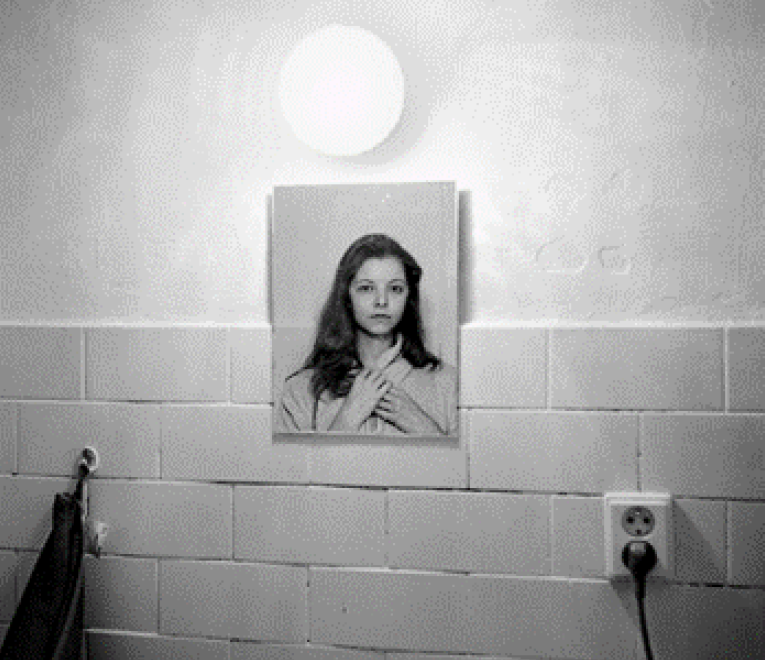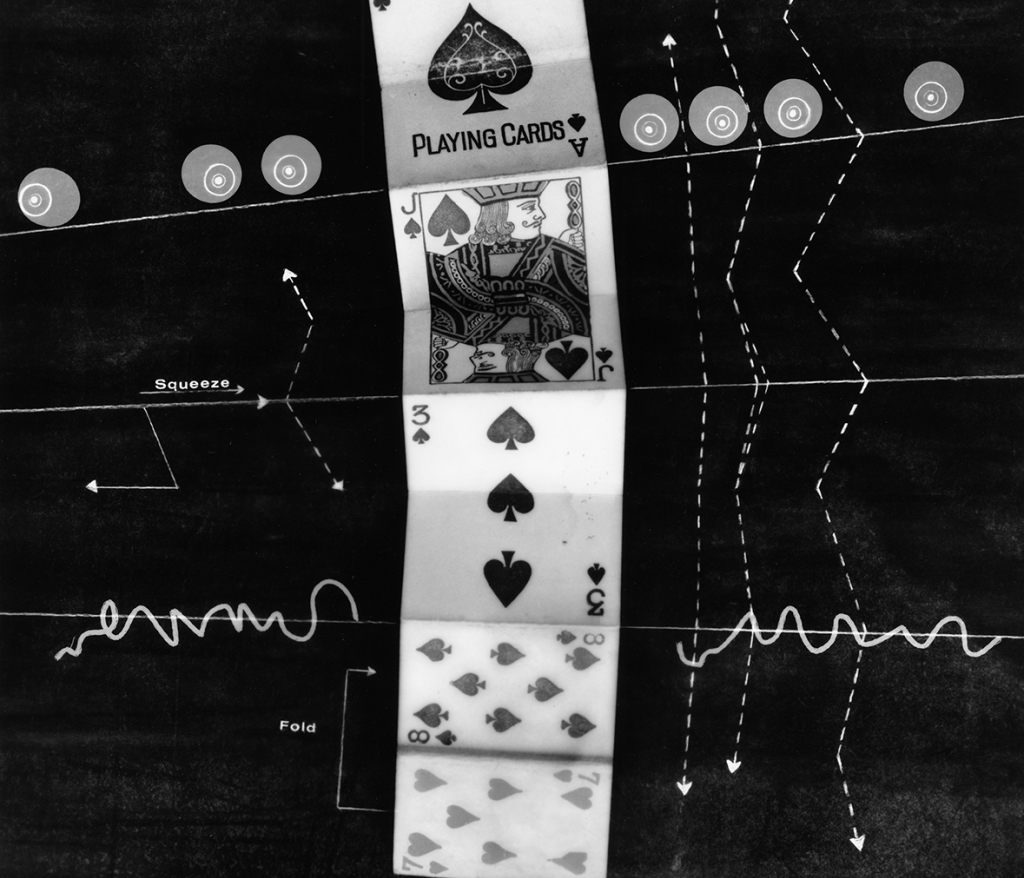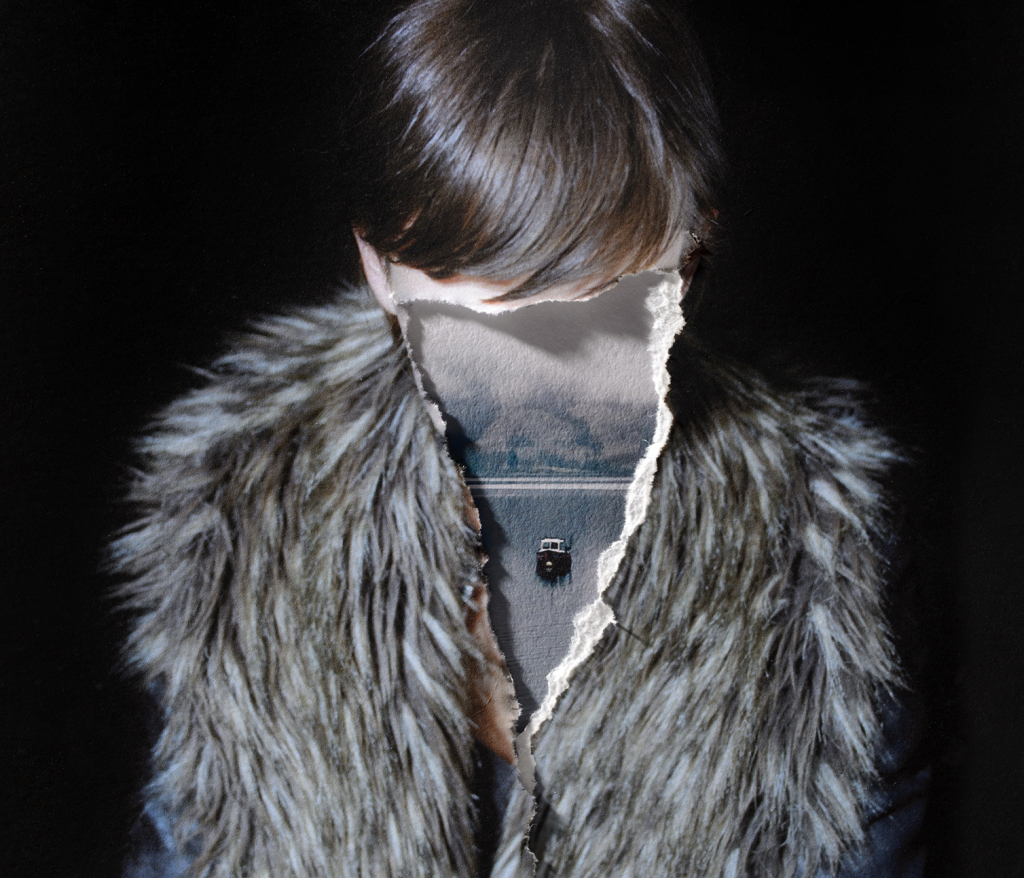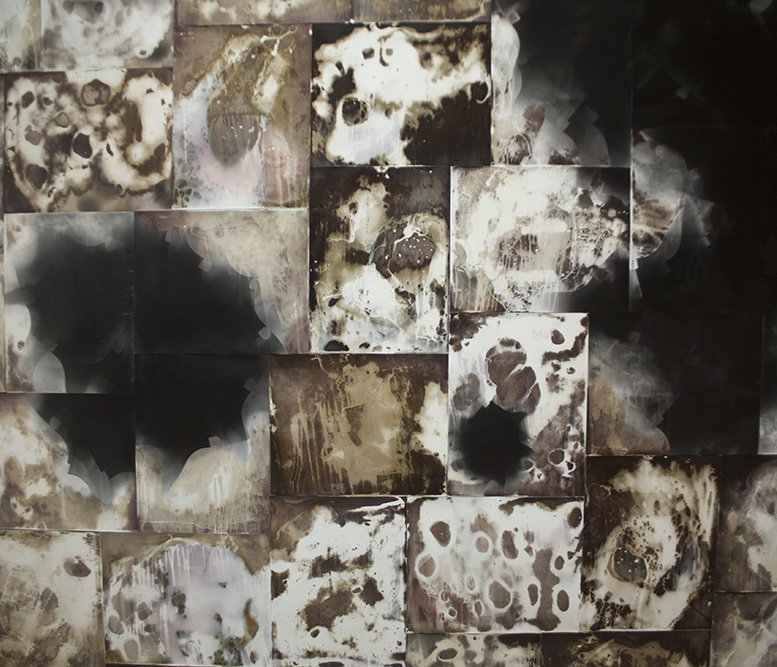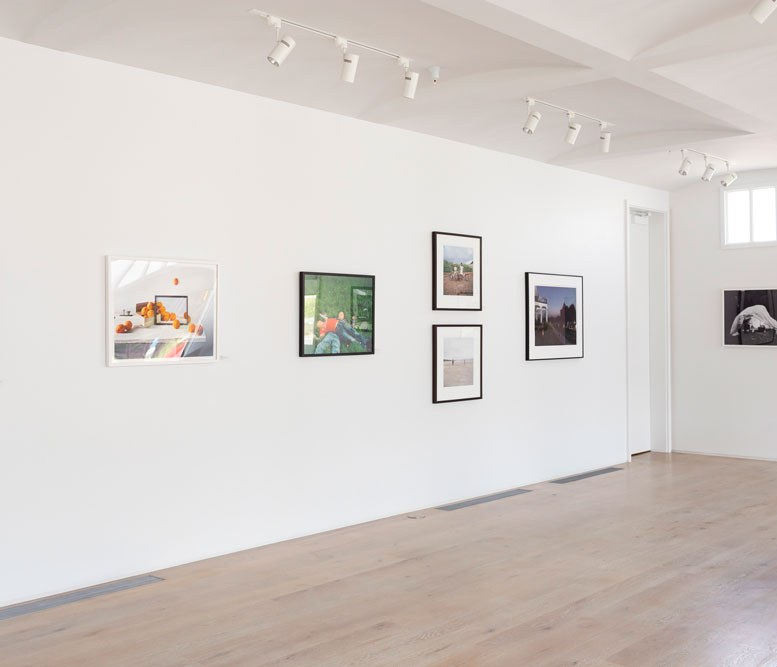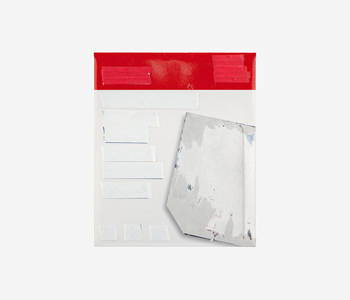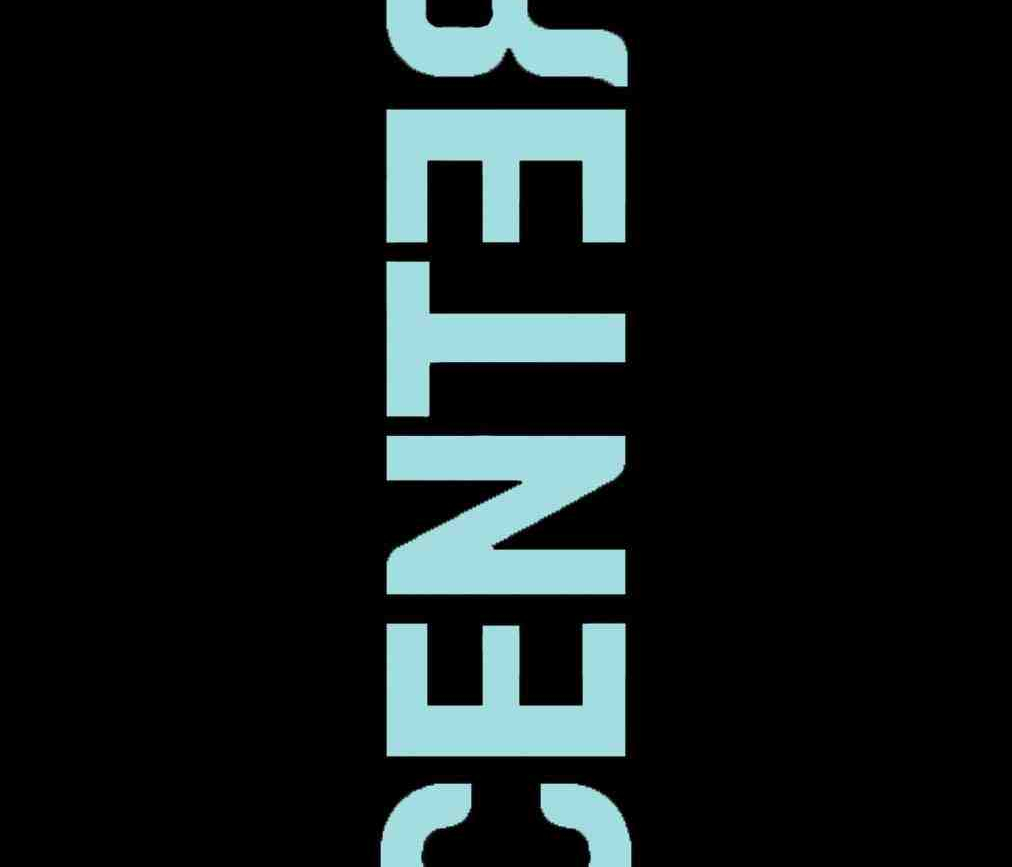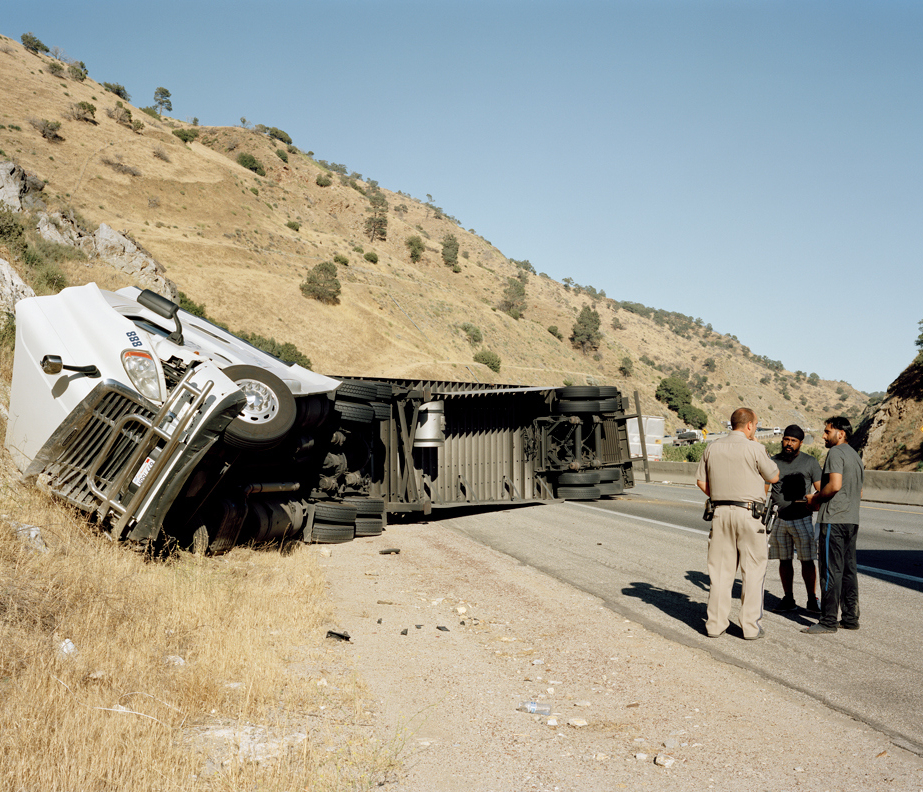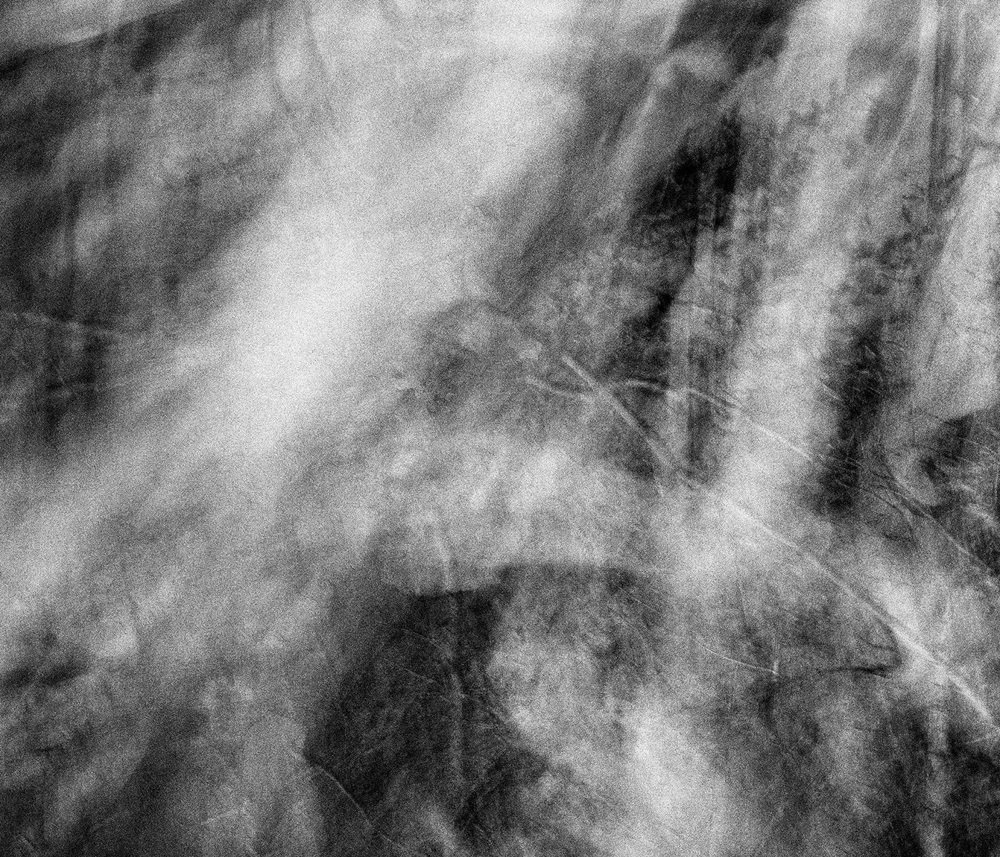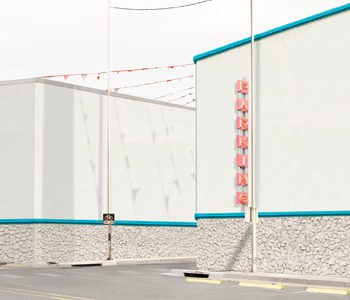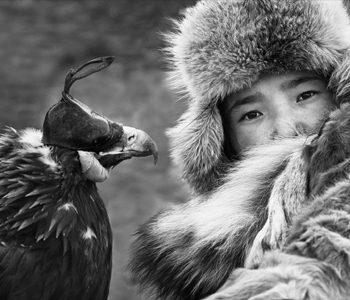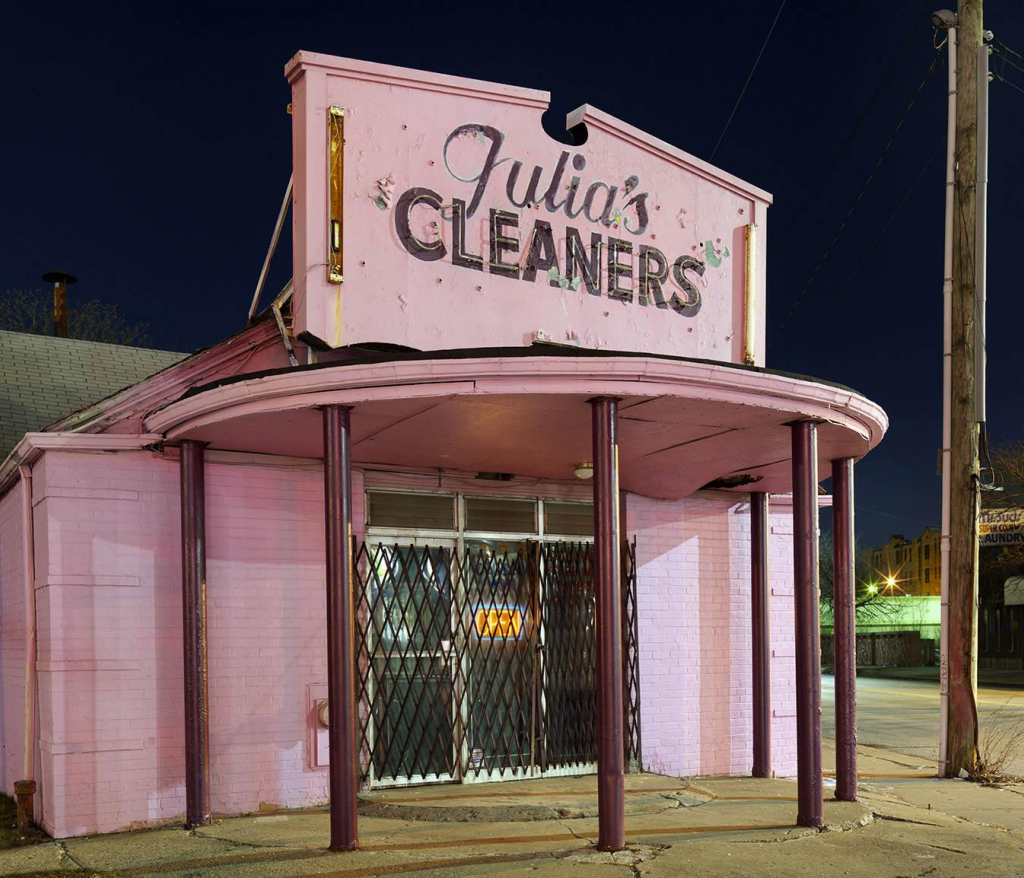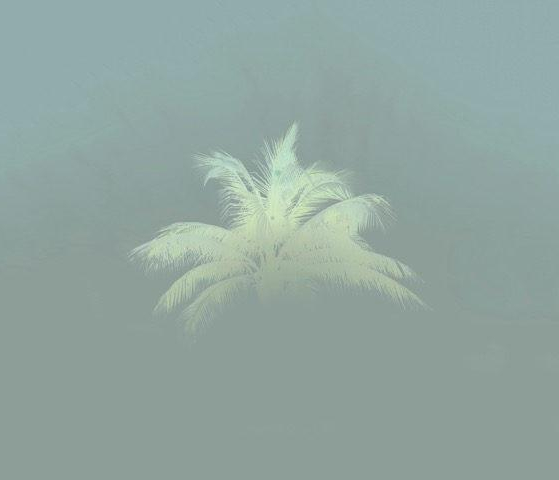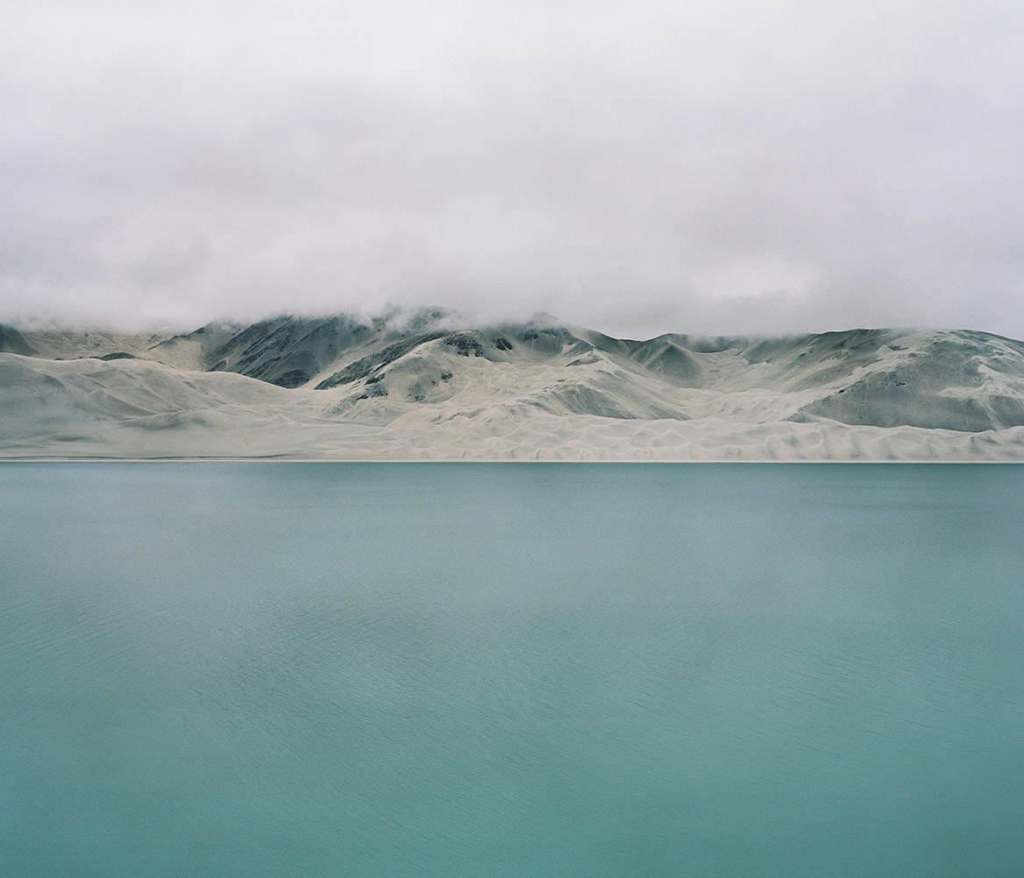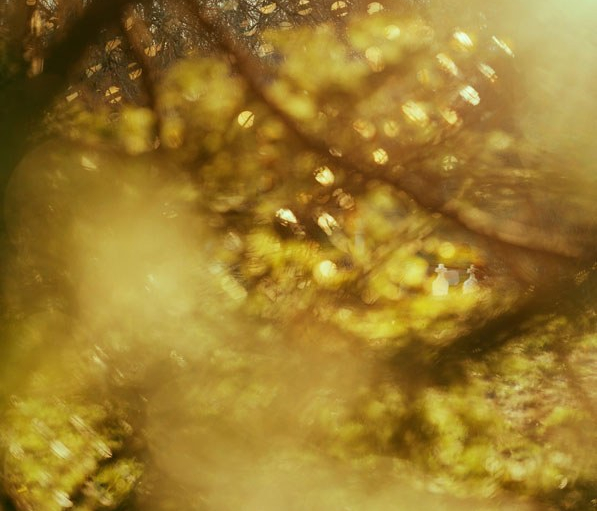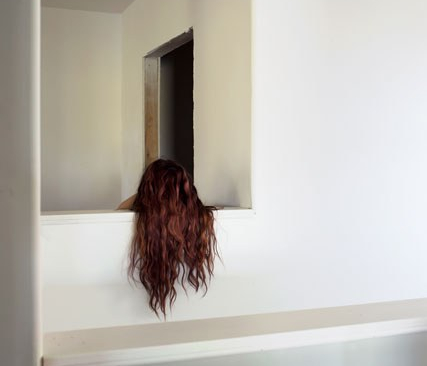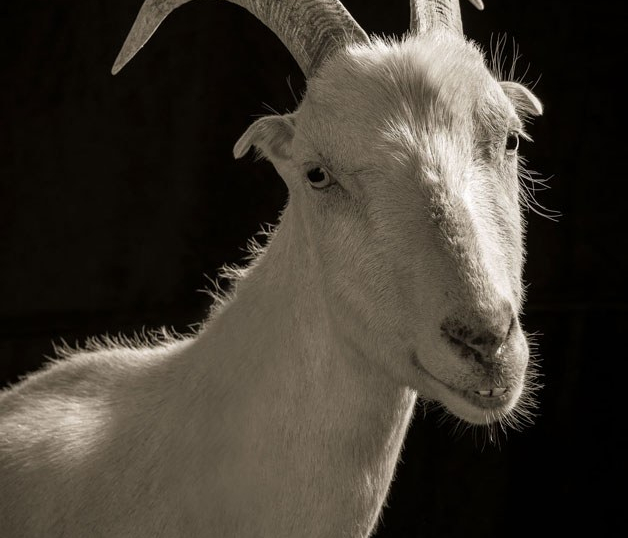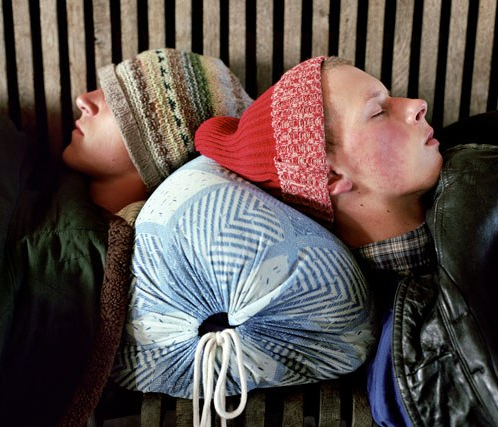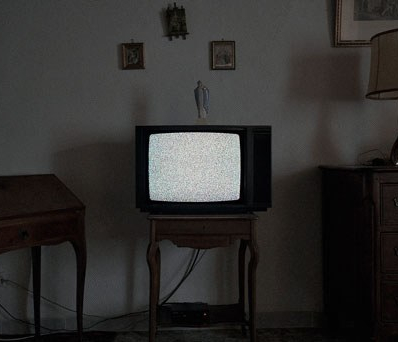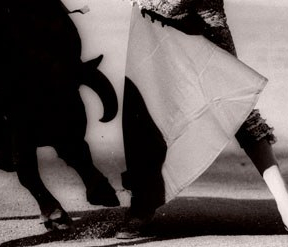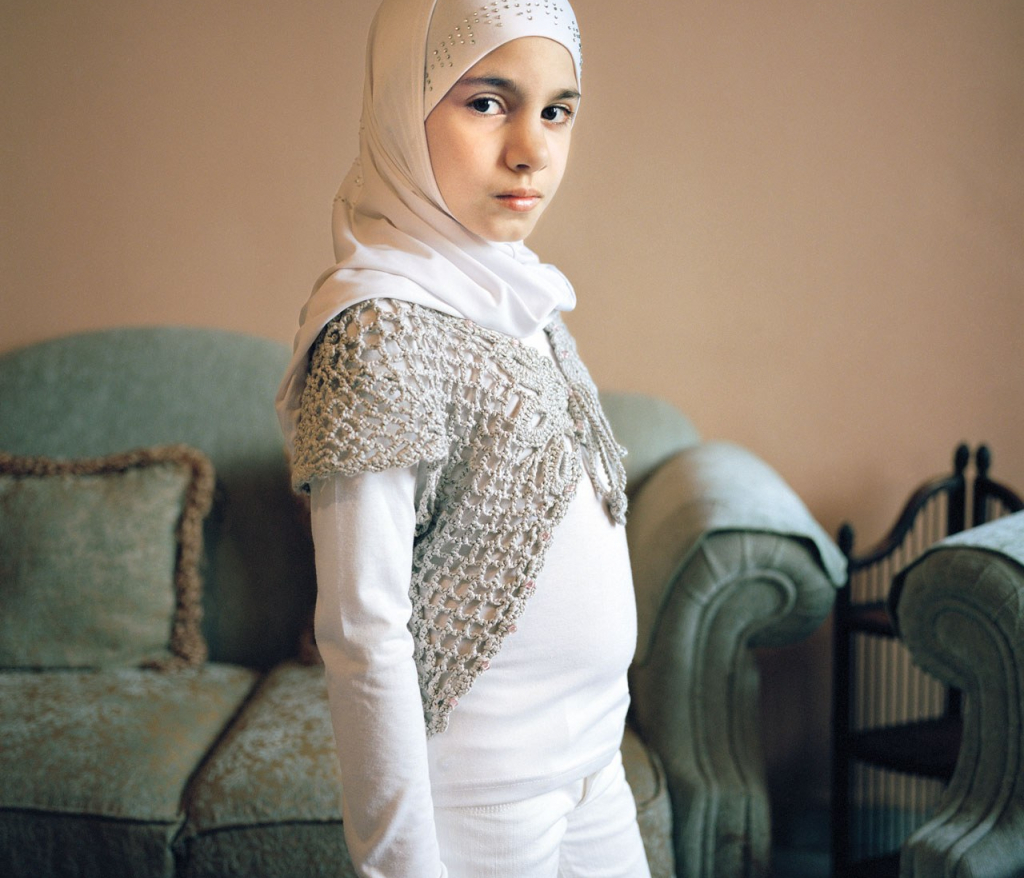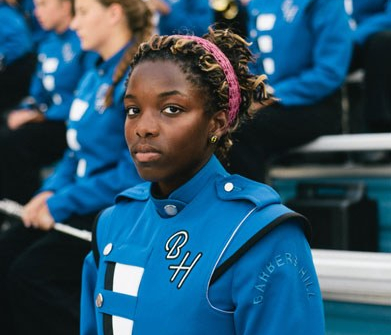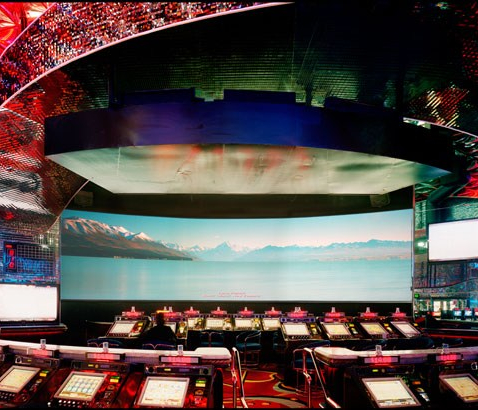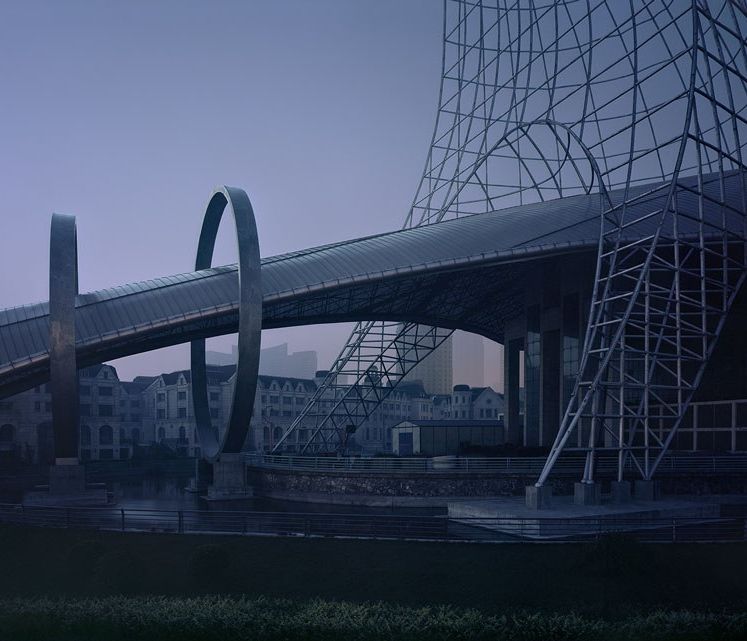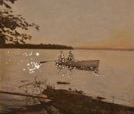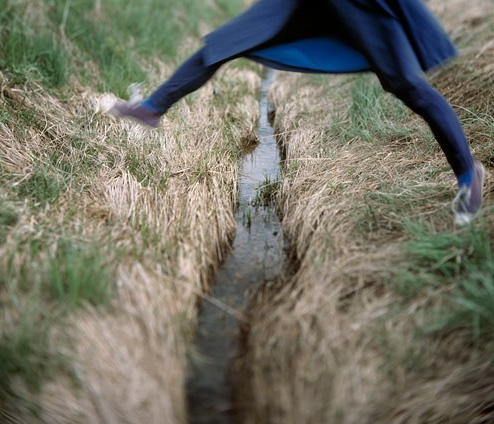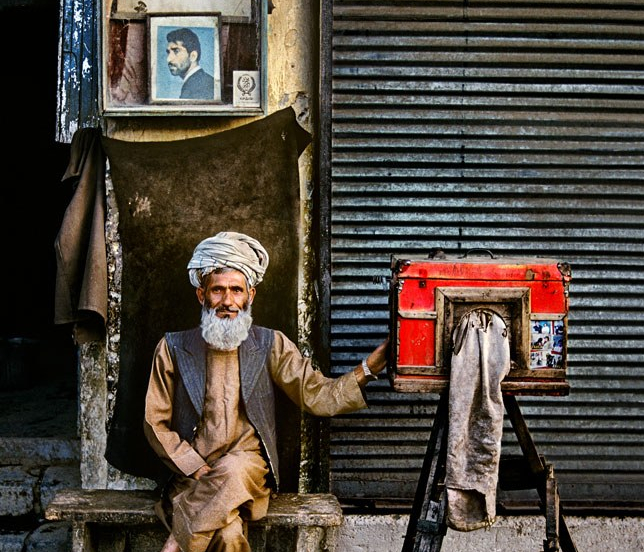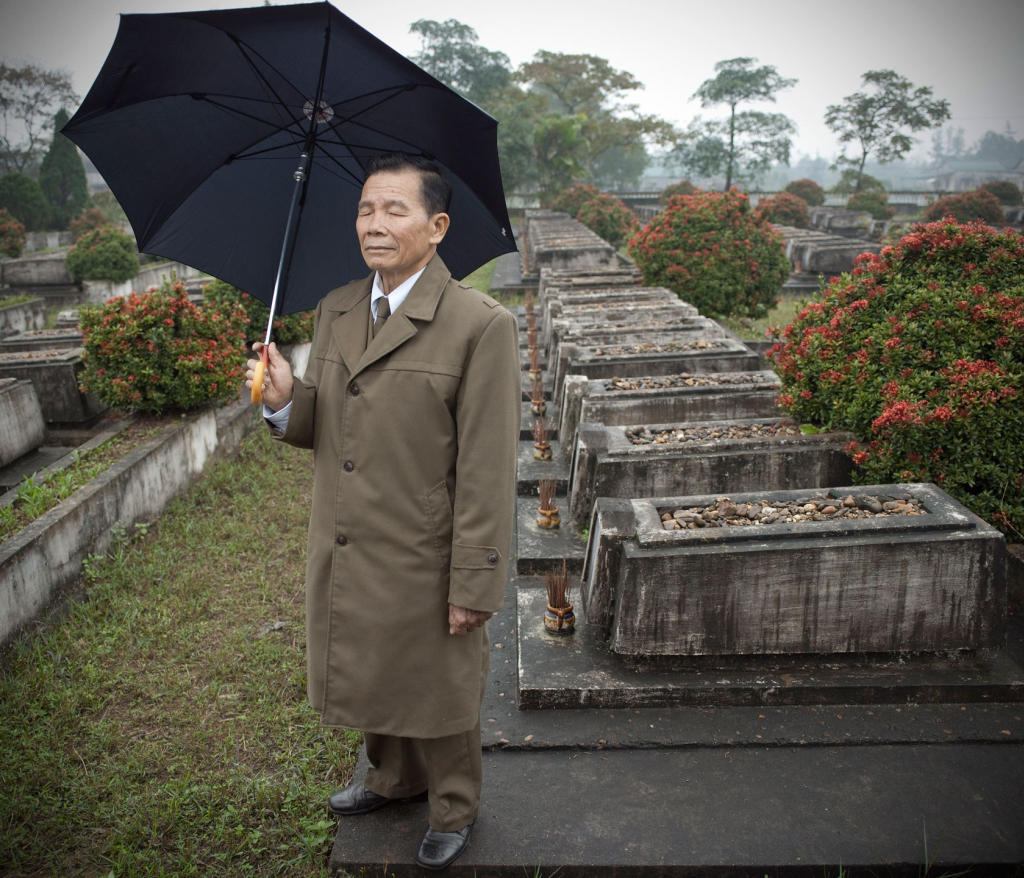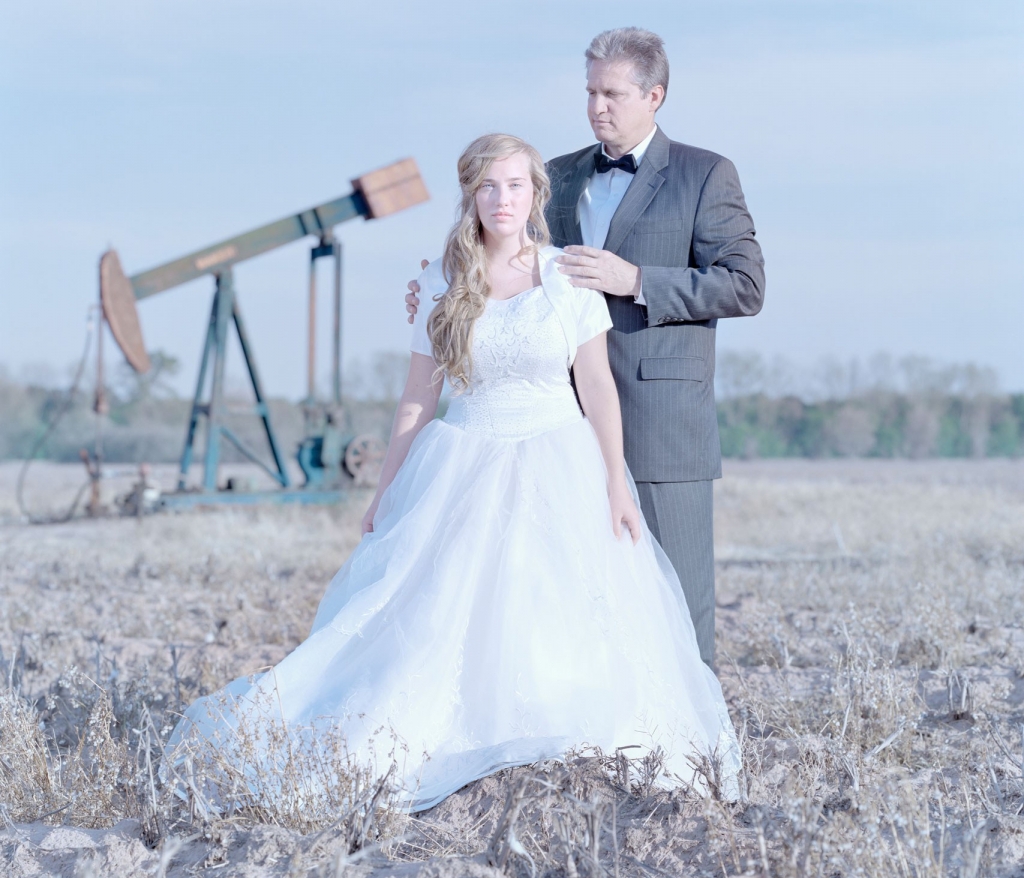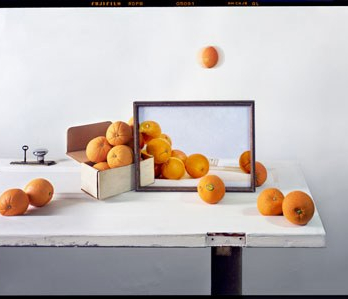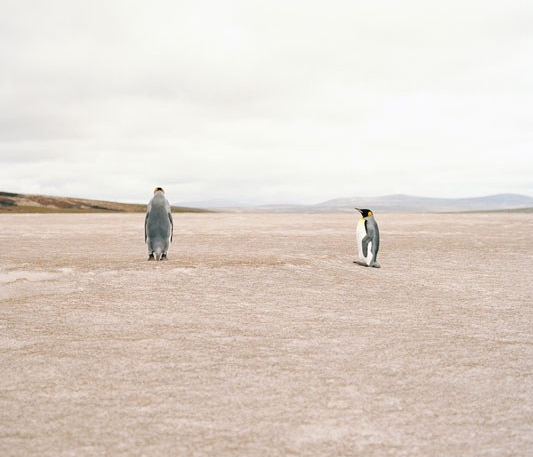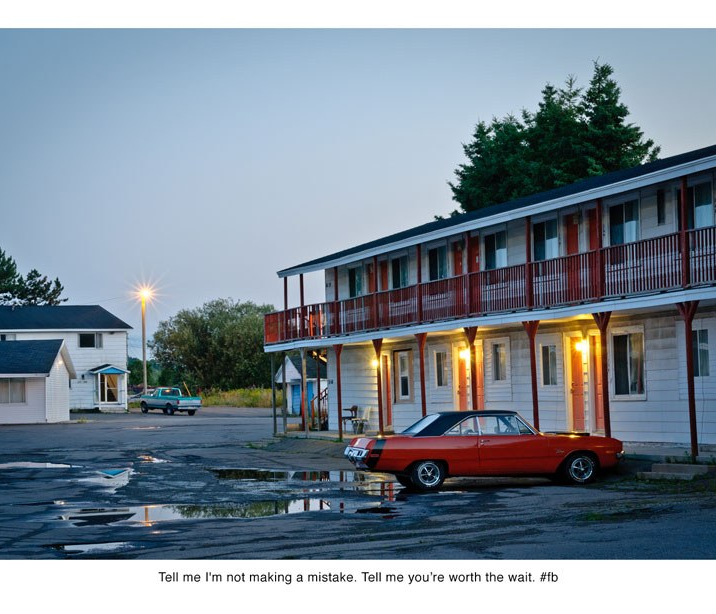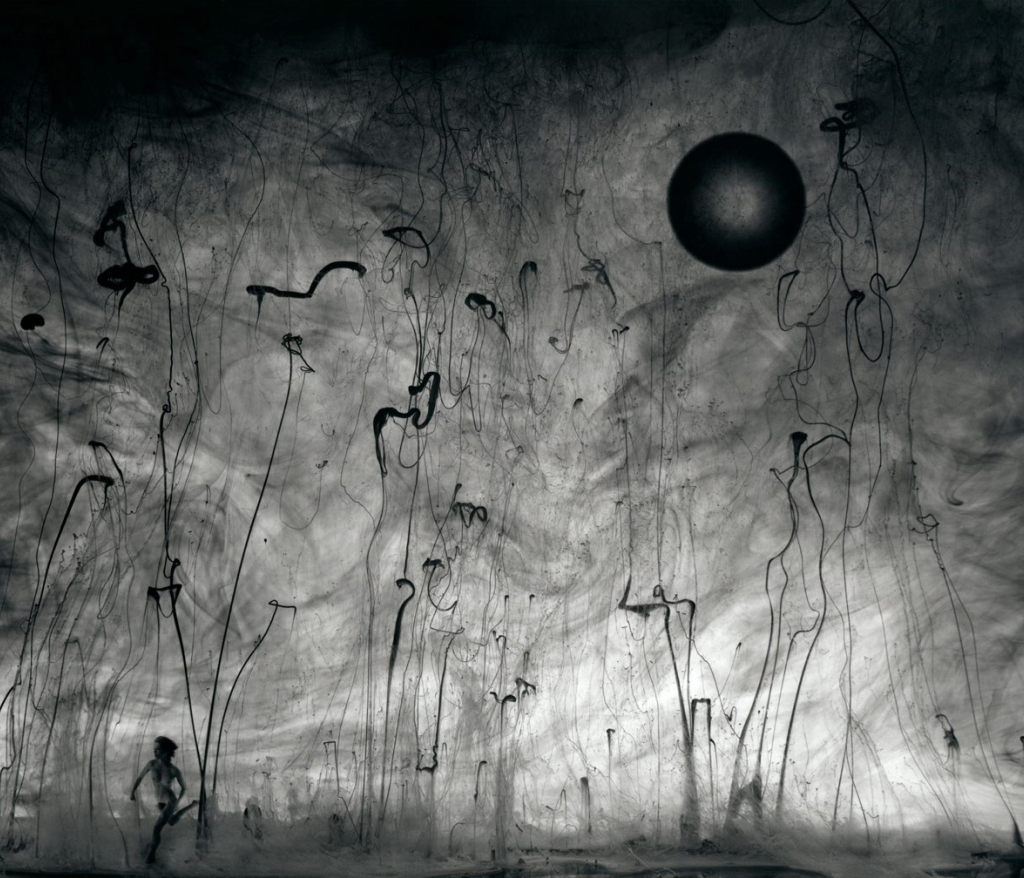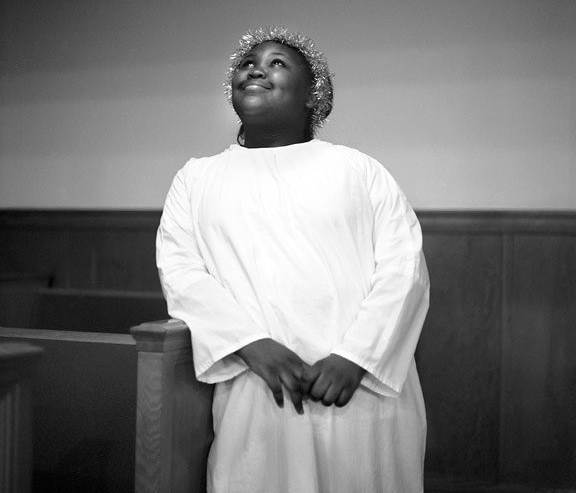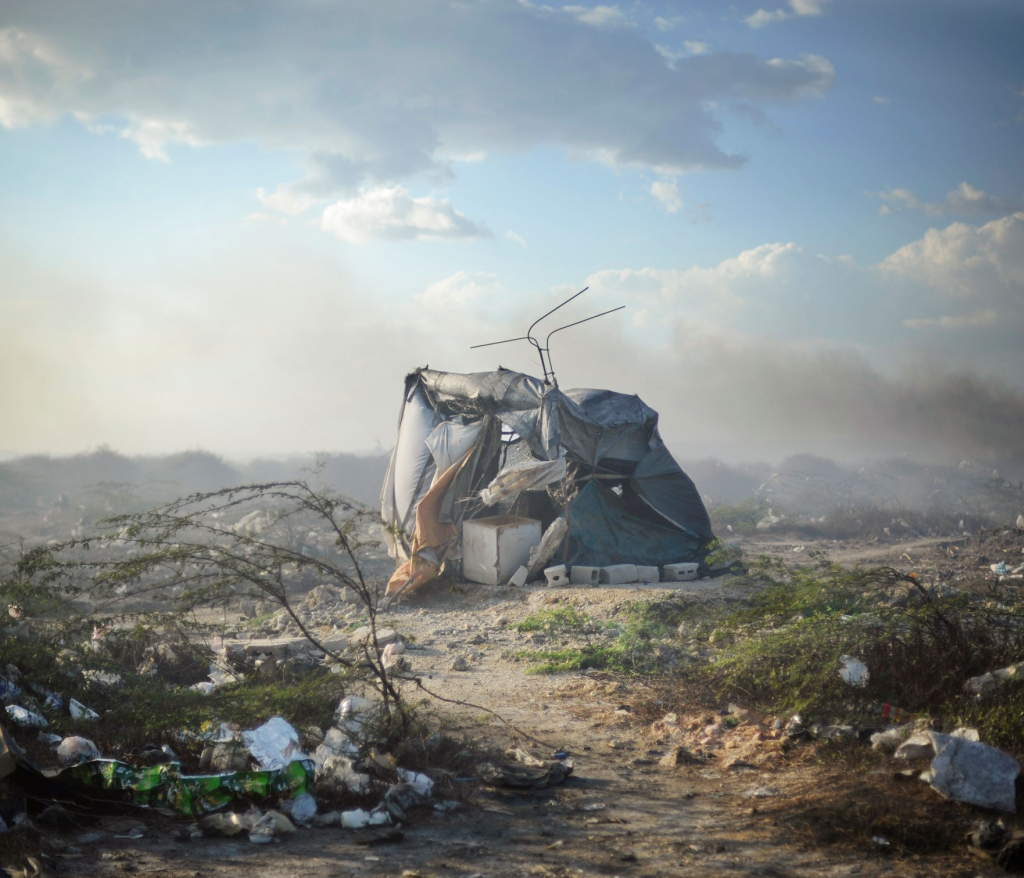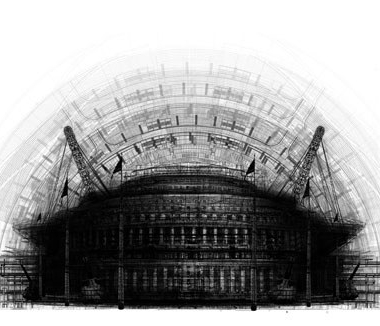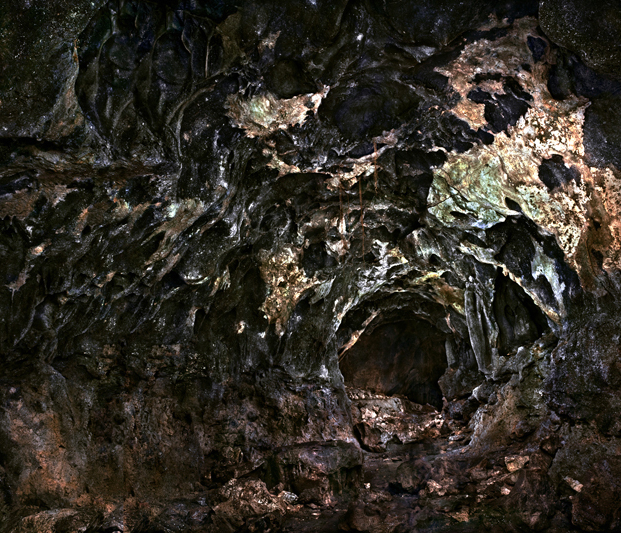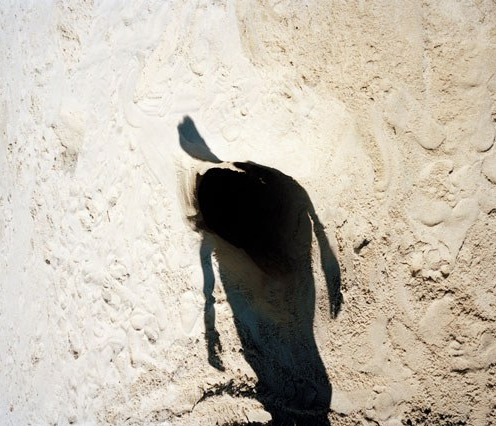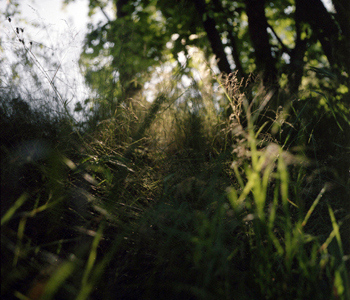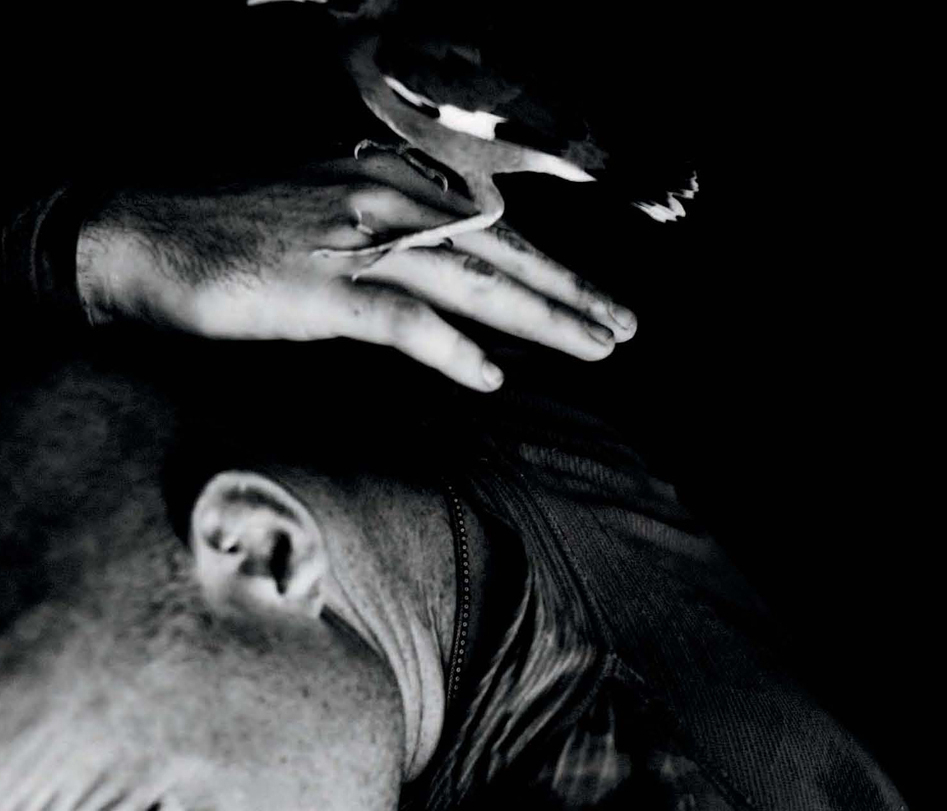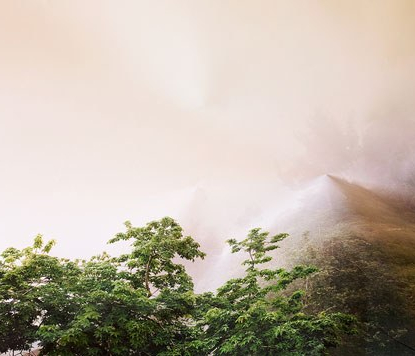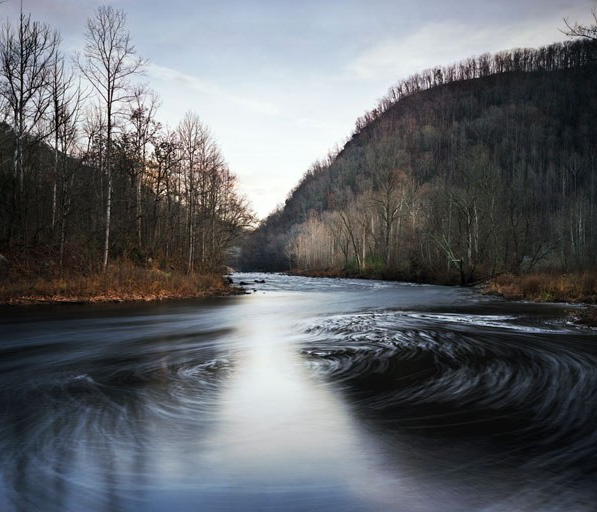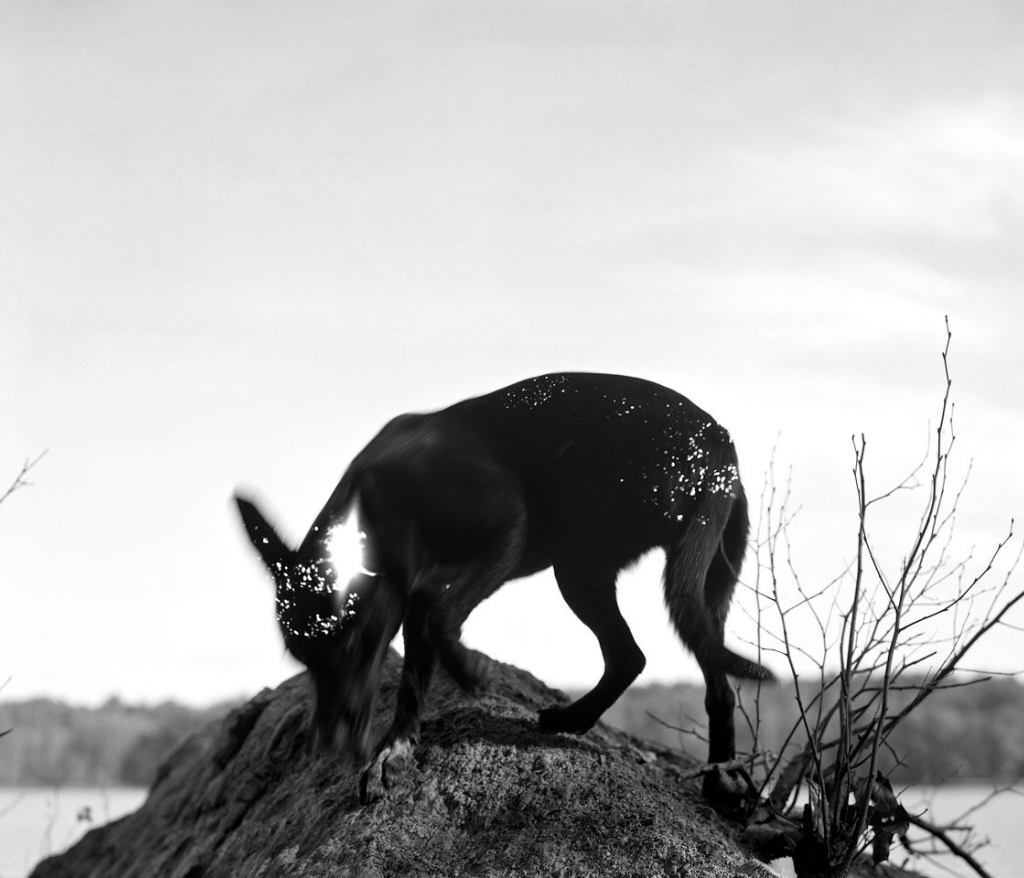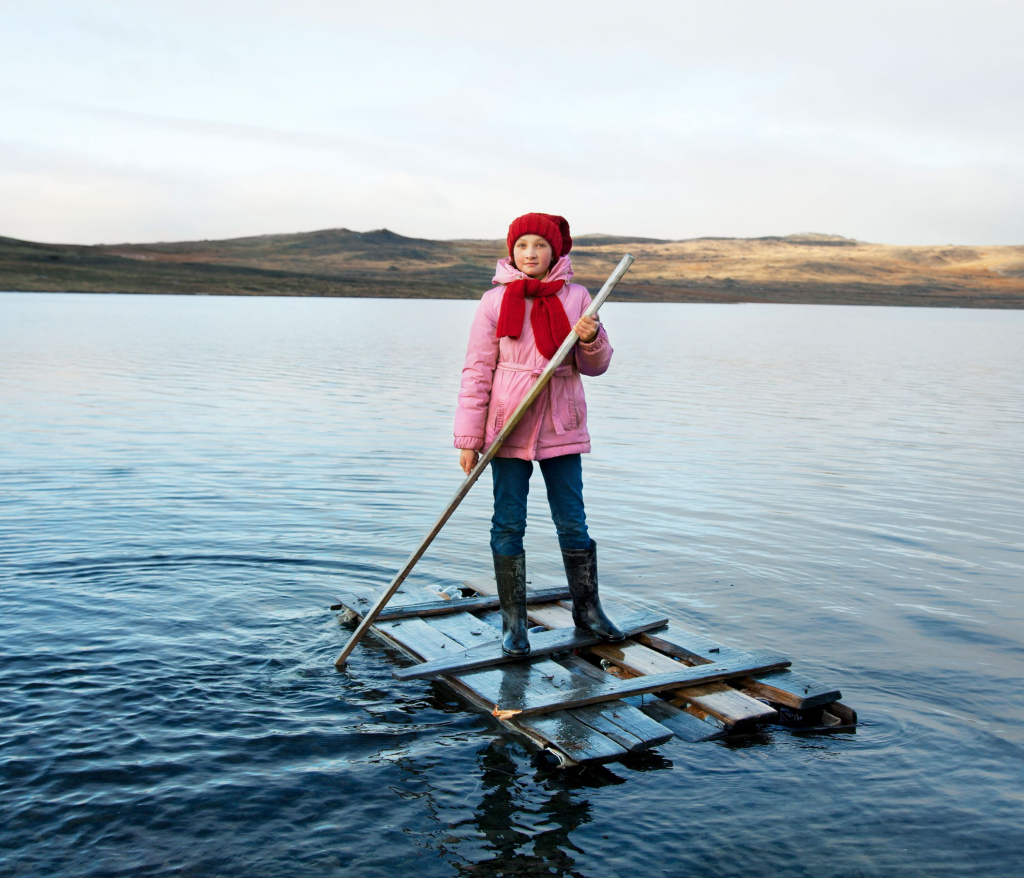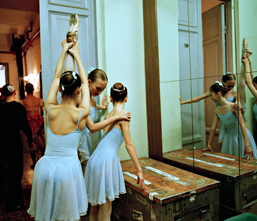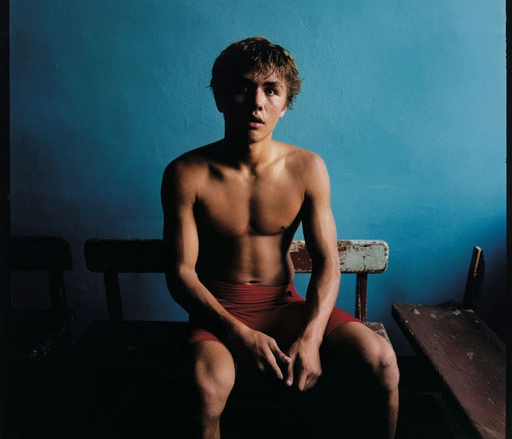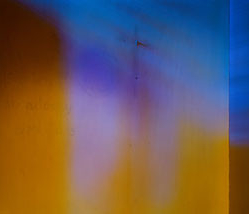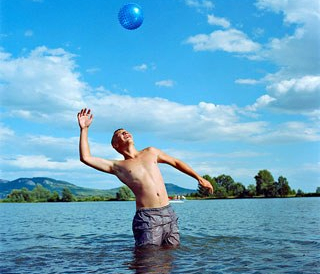Jon Tonks + Benjamin Rasmussen
Jon Tonks + Benjamin Rasmussen
Jon Tonks and Benjamin Rasmussen speak a similar visual language. They have a patient way of putting together images, as if slowly collecting chapters in a novel. Rasmussen’s work Home slowly stiches together an amalgamation of landscapes that ultimately give shape to his own sense of personal identity. Tonk’s series Empire explores the details of a national identity carried overseas.
Tonks took in in the culture of the islands at a walking pace. He shares with us his intuitive sense for symbols, pointing out meaning in the particulars. He highlights the appearance of British culture within the individuals and the local cultures of each territory and is able to bring this strange duality to our attention, sometimes quite humorously.
An image from St Helena portrays Stephen Biggs, a well-dressed man standing in front of a modest house with a rusted door. The surroundings suggest a rustic life. However, his shoes are impeccable, and an old imported Rolls Royce sits proudly in the drive beneath the tin awning. The car is strangely out of place, but perfectly British. Tonks’ observations succinctly illustrate the island’s particular mix of cultures. His direct manner of framing (subjects are centered and gazing right at you) adds to the ease with which the photographs produce emblems, vestiges of the rise and dissolution of hopes and industries within the empire.
Rasmussen’s work is also rich with symbols, but of a personal sort. The project title, Home, is the guiding text. You take that one word into each image and ask: why is this an image of home?
Certainly many various dwellings are represented, but beyond that he draws out the spirit of place. Each print reads like a memory, but so freshly different from the memory trope common in photography where recollections are softened and blurred. Rasmussen’s scenes create a visual equivalent to an encounter with a particular sound or scent that transports you into an exact memory. His scenes are romantic but specific.
In Noah and David After Playing, Rasmussen’s nephew sprawls out with his friend, melting into the Faroese grass with unfeigned abandon. The image is simple, dreamy. The whole world within the frame consists of two free spirits and the grass, tall cool green grass dotted with yellow buds. The airy feeling of childhood is transmuted with clarity and precision.
Home and Empire are delightfully slow stories. In this exhibit, Tonks and Rasmussen offer an absorbing collection of their intimate experiences with these small communities around the globe.
– Mia Dalglish + Lisa Woodward
Empire Artist Statement
EMPIRE is a journey across the South Atlantic exploring life on four remote islands – the British Overseas Territories of Ascension Island, Tristan da Cunha, the Falkland Islands and St. Helena – relics of the once formidable British Empire, all intertwined through their shared history.
Spanning over six years, Jon Tonks spent up to a month at a time in each territory, travelling 60,000 miles around the Atlantic via military outposts, low-lit airstrips and a long voyage aboard the last working Royal Mail Ship. Some 400 rolls of film, 24 flights and 32 days at sea later, the resulting work creates an insight into these distant places that resonate with a sense of Britishness which is remarkably recognisable yet inescapably strange.
Tonks has photographed the people, the landscapes and the traces of the past embedded within each territory, and has published a book to accompany the work, combining history and anecdote to tell a story of these remote and remarkable islands. His motivation is neither political or nostalgic, the images arising primarily from his curiosity about the lives of these distant lands that remain very firmly British.
Artist Bio
Born in the West Midlands in 1981, he studied Product Design for three years before turning to photography. Following a brief period as a staff photographer for a newspaper network in the Midlands, Jon left to study for an MA in Photojournalism & Documentary Photography at the London College of Communication.
Since 2007, he has been undertaking commissions and working on a long term personal project voyaging to remote British Overseas Territories in the South Atlantic Ocean. This work has culminated to form his first monograph ‘Empire’, nominated by Martin Parr as one his best books of 2013, available to order here.
Clients include The Sunday Times Magazine, Guardian Weekend Magazine, Financial Times Magazine, Monocle, Nokia, Saturday Telegraph Magazine, and TIME.
Jon currently resides in the city of Bath, UK.
Home Artist Statement
I grew up in the Philippines, on the small island of Balabac, with an American mother and a father from the Faroe Islands, a small Danish protectorate in the North Atlantic. As an adult, I moved to the United States and married a woman from rural Wyoming.
Belonging to three groups so geographically, culturally and linguistically separated from one another, I exist in a middle place between them. I am both separated from truly being a part of these societies, while also functioning as a conduit between them.
HOME. has grown out a desire for my different worlds to interact with and know each other. This work is meant for them.
But this raises the question of how does one make photographs that connect people to each other? How do you embrace the spirit of a place without exoticising its inhabitants into the status of the “other”?
Susan Sontag wrote, “The lure of photographs, their hold on us, is that they offer at one and the same time a connoisseur’s relation to the world and a promiscuous acceptance of the world.” My goal is to share this “promiscuous acceptance” with the viewer and through that, share the common value that each place holds for me. The desire is to have an aesthetic and humanistic meeting place, even if there cannot be a cultural or linguistic one.
My approach has been less a part of the documentary or photojournalistic tradition then an ode to the picture postcard. The images shown here are romanticized portrayals of what is alien to an outsider and mundane to a resident. And through the shuffling of images, the aim is to give viewers a chance to experience both the known and the foreign simultaneously. This makes the strange more recognizable while simultaneously injecting life back into the familiar.
– Benjamin Rasmussen
Artist Bio
Benjamin Rasmussen is a freelance photographer based in Denver, Colorado.
He spent his childhood with an indigenous people group on an island in the southern Philippines, his university years with evangelicals in a small town in northern Arkansas, and a year with the descendants of Vikings in the Faroe Islands, a nation of 45,000 residents in the middle of the North Atlantic.
His work has been selected for the American Photography 26 and 28 Annuals, shown at the Annenberg Space for Photography, and awarded in the 2010 POYi awards. He has been chosen as one of Photolucida’s 2010 Critical Mass Top 50 and included in the Magenta Foundation’s Flash Forward – Emerging Photographers 2011 and 2012 lists.
Jon Tonks + Benjamin Rasmussen
Jon Tonks and Benjamin Rasmussen speak a similar visual language. They have a patient way of putting together images, as if slowly collecting chapters in a novel. Rasmussen’s work Home slowly stiches together an amalgamation of landscapes that ultimately give shape to his own sense of personal identity. Tonk’s series Empire explores the details of a national identity carried overseas.
Tonks took in in the culture of the islands at a walking pace. He shares with us his intuitive sense for symbols, pointing out meaning in the particulars. He highlights the appearance of British culture within the individuals and the local cultures of each territory and is able to bring this strange duality to our attention, sometimes quite humorously.
An image from St Helena portrays Stephen Biggs, a well-dressed man standing in front of a modest house with a rusted door. The surroundings suggest a rustic life. However, his shoes are impeccable, and an old imported Rolls Royce sits proudly in the drive beneath the tin awning. The car is strangely out of place, but perfectly British. Tonks’ observations succinctly illustrate the island’s particular mix of cultures. His direct manner of framing (subjects are centered and gazing right at you) adds to the ease with which the photographs produce emblems, vestiges of the rise and dissolution of hopes and industries within the empire.
Rasmussen’s work is also rich with symbols, but of a personal sort. The project title, Home, is the guiding text. You take that one word into each image and ask: why is this an image of home?
Certainly many various dwellings are represented, but beyond that he draws out the spirit of place. Each print reads like a memory, but so freshly different from the memory trope common in photography where recollections are softened and blurred. Rasmussen’s scenes create a visual equivalent to an encounter with a particular sound or scent that transports you into an exact memory. His scenes are romantic but specific.
In Noah and David After Playing, Rasmussen’s nephew sprawls out with his friend, melting into the Faroese grass with unfeigned abandon. The image is simple, dreamy. The whole world within the frame consists of two free spirits and the grass, tall cool green grass dotted with yellow buds. The airy feeling of childhood is transmuted with clarity and precision.
Home and Empire are delightfully slow stories. In this exhibit, Tonks and Rasmussen offer an absorbing collection of their intimate experiences with these small communities around the globe.
– Mia Dalglish + Lisa Woodward
Empire Artist Statement
EMPIRE is a journey across the South Atlantic exploring life on four remote islands – the British Overseas Territories of Ascension Island, Tristan da Cunha, the Falkland Islands and St. Helena – relics of the once formidable British Empire, all intertwined through their shared history.
Spanning over six years, Jon Tonks spent up to a month at a time in each territory, travelling 60,000 miles around the Atlantic via military outposts, low-lit airstrips and a long voyage aboard the last working Royal Mail Ship. Some 400 rolls of film, 24 flights and 32 days at sea later, the resulting work creates an insight into these distant places that resonate with a sense of Britishness which is remarkably recognisable yet inescapably strange.
Tonks has photographed the people, the landscapes and the traces of the past embedded within each territory, and has published a book to accompany the work, combining history and anecdote to tell a story of these remote and remarkable islands. His motivation is neither political or nostalgic, the images arising primarily from his curiosity about the lives of these distant lands that remain very firmly British.
Artist Bio
Born in the West Midlands in 1981, he studied Product Design for three years before turning to photography. Following a brief period as a staff photographer for a newspaper network in the Midlands, Jon left to study for an MA in Photojournalism & Documentary Photography at the London College of Communication.
Since 2007, he has been undertaking commissions and working on a long term personal project voyaging to remote British Overseas Territories in the South Atlantic Ocean. This work has culminated to form his first monograph ‘Empire’, nominated by Martin Parr as one his best books of 2013, available to order here.
Clients include The Sunday Times Magazine, Guardian Weekend Magazine, Financial Times Magazine, Monocle, Nokia, Saturday Telegraph Magazine, and TIME.
Jon currently resides in the city of Bath, UK.
Home Artist Statement
I grew up in the Philippines, on the small island of Balabac, with an American mother and a father from the Faroe Islands, a small Danish protectorate in the North Atlantic. As an adult, I moved to the United States and married a woman from rural Wyoming.
Belonging to three groups so geographically, culturally and linguistically separated from one another, I exist in a middle place between them. I am both separated from truly being a part of these societies, while also functioning as a conduit between them.
HOME. has grown out a desire for my different worlds to interact with and know each other. This work is meant for them.
But this raises the question of how does one make photographs that connect people to each other? How do you embrace the spirit of a place without exoticising its inhabitants into the status of the “other”?
Susan Sontag wrote, “The lure of photographs, their hold on us, is that they offer at one and the same time a connoisseur’s relation to the world and a promiscuous acceptance of the world.” My goal is to share this “promiscuous acceptance” with the viewer and through that, share the common value that each place holds for me. The desire is to have an aesthetic and humanistic meeting place, even if there cannot be a cultural or linguistic one.
My approach has been less a part of the documentary or photojournalistic tradition then an ode to the picture postcard. The images shown here are romanticized portrayals of what is alien to an outsider and mundane to a resident. And through the shuffling of images, the aim is to give viewers a chance to experience both the known and the foreign simultaneously. This makes the strange more recognizable while simultaneously injecting life back into the familiar.
– Benjamin Rasmussen
Artist Bio
Benjamin Rasmussen is a freelance photographer based in Denver, Colorado.
He spent his childhood with an indigenous people group on an island in the southern Philippines, his university years with evangelicals in a small town in northern Arkansas, and a year with the descendants of Vikings in the Faroe Islands, a nation of 45,000 residents in the middle of the North Atlantic.
His work has been selected for the American Photography 26 and 28 Annuals, shown at the Annenberg Space for Photography, and awarded in the 2010 POYi awards. He has been chosen as one of Photolucida’s 2010 Critical Mass Top 50 and included in the Magenta Foundation’s Flash Forward – Emerging Photographers 2011 and 2012 lists.
